Choosing the perfect house siding color transforms your home's exterior and significantly impacts curb appeal. With countless options available, selecting the right hue requires understanding current trends, architectural compatibility, and long-term appeal. Modern homeowners increasingly favor colors that blend timeless elegance with contemporary style, ranging from classic neutrals to bold statement shades. Popular house siding colors in 2025 include everything from timeless neutrals like white and gray to bold choices like navy blue and forest green. The key lies in choosing colors that complement your home's architecture while reflecting your personal style and enhancing the surrounding landscape.
1. Classic White House Siding Colors
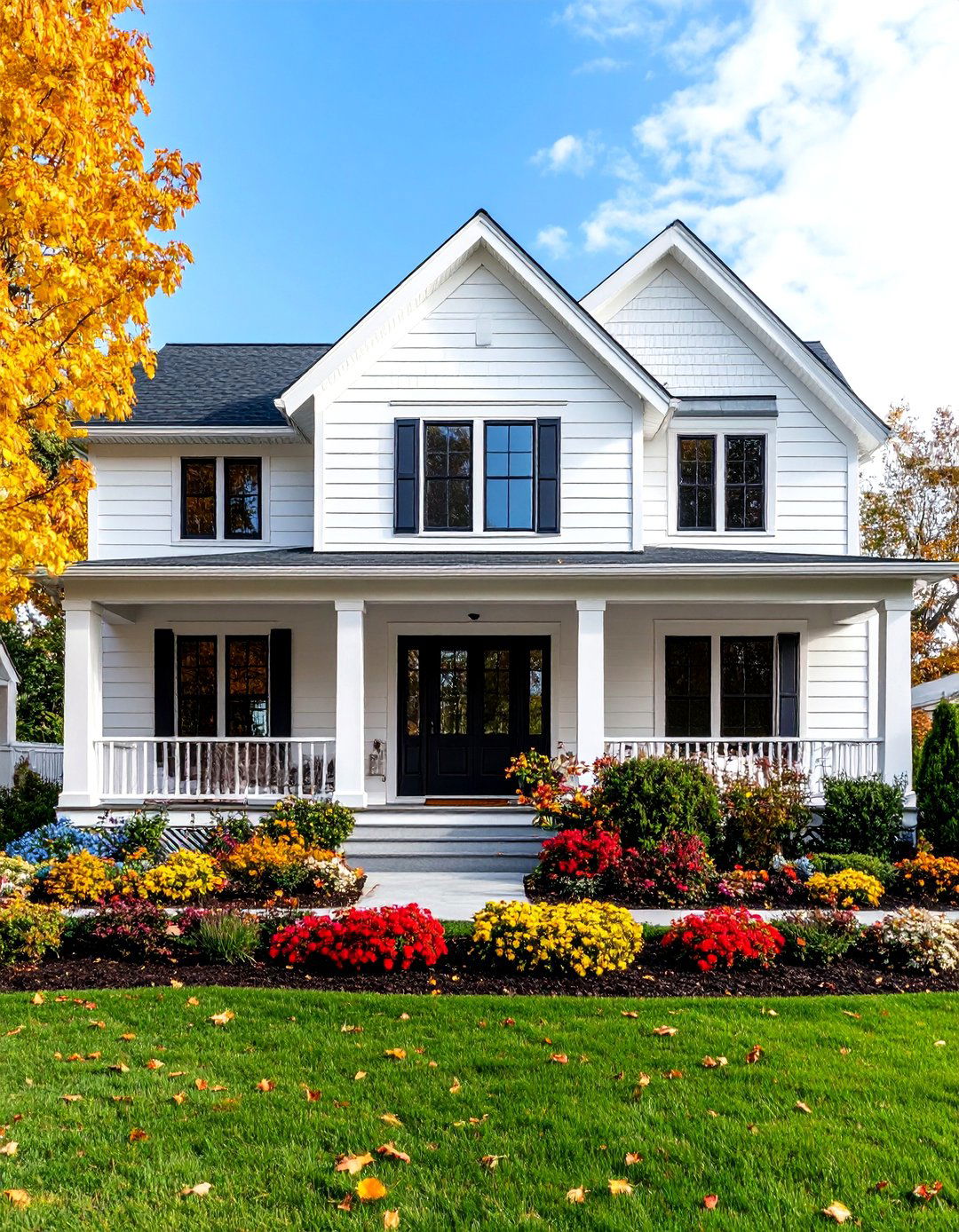
Classic white remains a timeless favorite among house siding colors, dominating 35-45% of all sales. Arctic White and similar shades offer unmatched versatility, complementing virtually any architectural style from traditional colonial to modern farmhouse designs. This luminous choice creates an illusion of larger space while providing a clean backdrop for colorful accents like shutters, doors, and landscaping. White siding pairs beautifully with dark trim colors such as charcoal or black, creating striking contrasts that highlight architectural details. However, white siding requires more maintenance as it shows dirt and grime easily. Despite maintenance considerations, white house siding colors consistently deliver excellent resale value and broad market appeal, making them a smart long-term investment for homeowners seeking classic elegance.
2. Charcoal Gray House Siding Colors
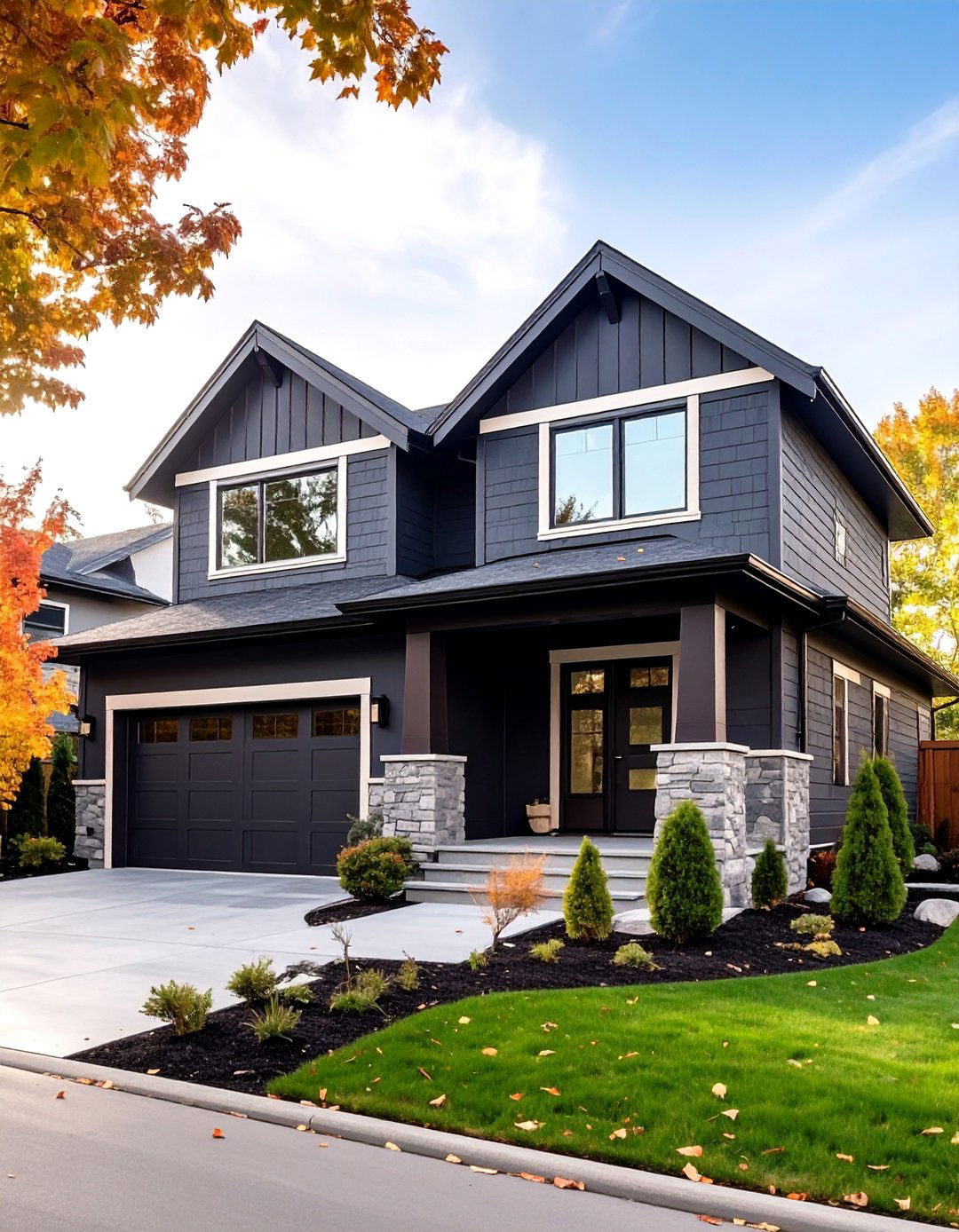
Among trending house siding colors, charcoal gray stands out for its sophisticated modern appeal. Rich, deep colors like charcoal gray are becoming more prominent in 2025, giving homes a sophisticated, modern look while making a bold statement. This dramatic shade works exceptionally well on contemporary homes and urban designs, creating striking curb appeal that commands attention. Charcoal gray house siding colors hide dirt effectively while maintaining their elegant appearance throughout seasons. The color pairs beautifully with crisp white trim for maximum contrast or with lighter gray accents for a monochromatic scheme. Night Gray evokes passion and romance coupled with drama, mystery, and sophistication. This bold choice transforms any home into a design statement while remaining sophisticated enough for traditional neighborhoods.
3. Navy Blue House Siding Colors
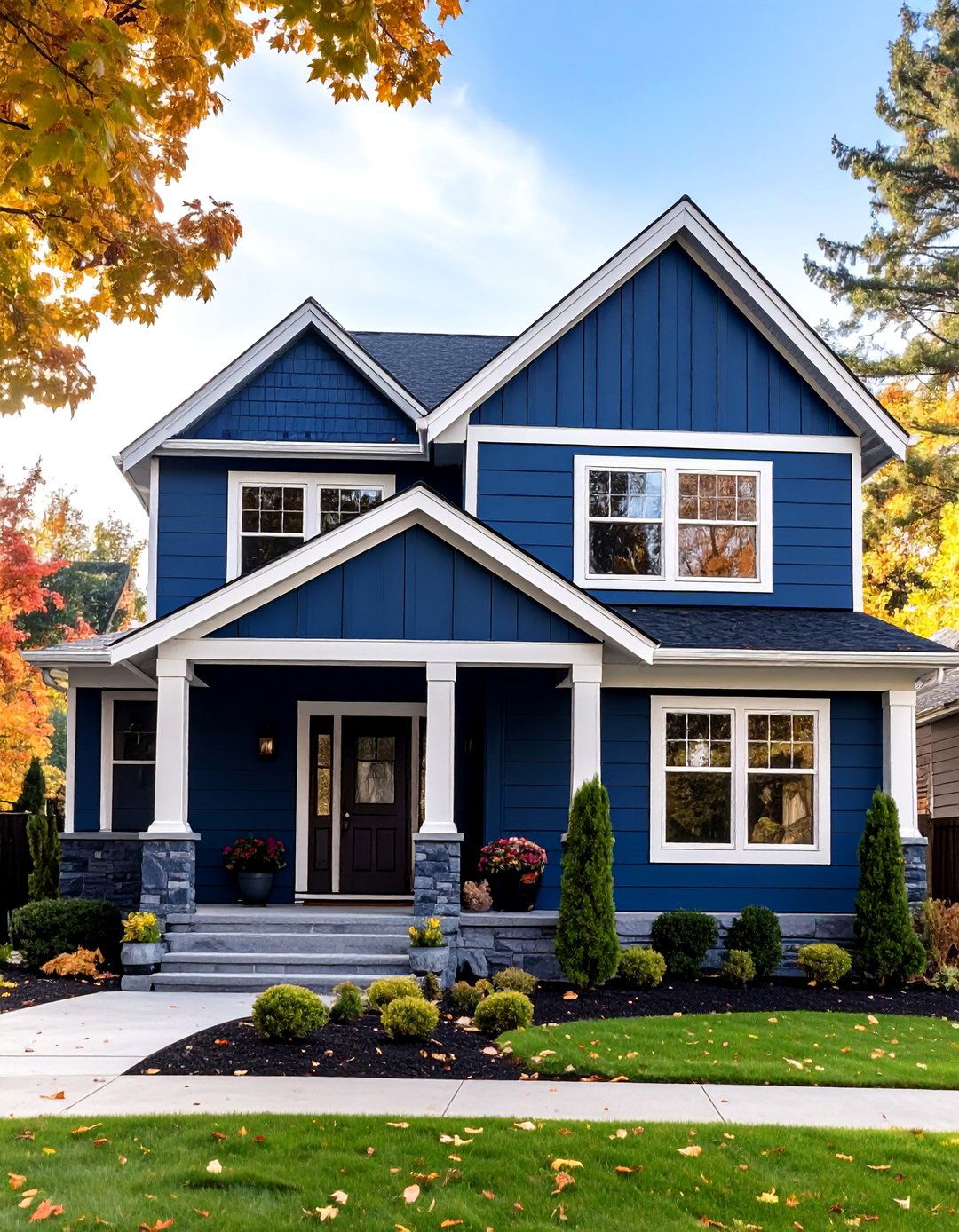
Blue has taken regions by storm as a striking hue perfect for those looking to make a bold statement. Navy blue house siding colors offer sophisticated depth while maintaining classic appeal across various architectural styles. Heavily saturated shades of blue — referred to as midnight blue — are often associated with strength and safety, desirable qualities for a home. This rich color creates stunning contrasts when paired with white or light-colored trim, making architectural features pop against seasonal backdrops. Navy blue works particularly well on farmhouse, coastal, and contemporary designs. Navy blue vinyl siding is a smart choice if you are looking to add a touch of sophistication and style to your home. The color's versatility allows homeowners to create either bold dramatic statements or subtle elegant appearances depending on accent choices.
4. Forest Green House Siding Colors

Forest Green calls to mind the color of trees in mid-summer, but also works well as a background color for homes that need bold accents. These house siding colors create seamless connections with natural surroundings, particularly appealing in wooded or rural settings. Forest green evokes tranquility while adding sophisticated character that complements both traditional and contemporary architectural styles. Forest green vinyl siding brings an organic and inviting feel to your home, blending harmoniously with the surrounding landscape. The earthy tone pairs exceptionally well with natural stone accents, wooden elements, and cream or white trim. Forest Green siding is particularly prevalent in rural areas throughout the northern United States. This color choice offers year-round appeal, maintaining its beauty through changing seasons while providing excellent backdrop for colorful landscaping and architectural details.
5. Desert Tan House Siding Colors
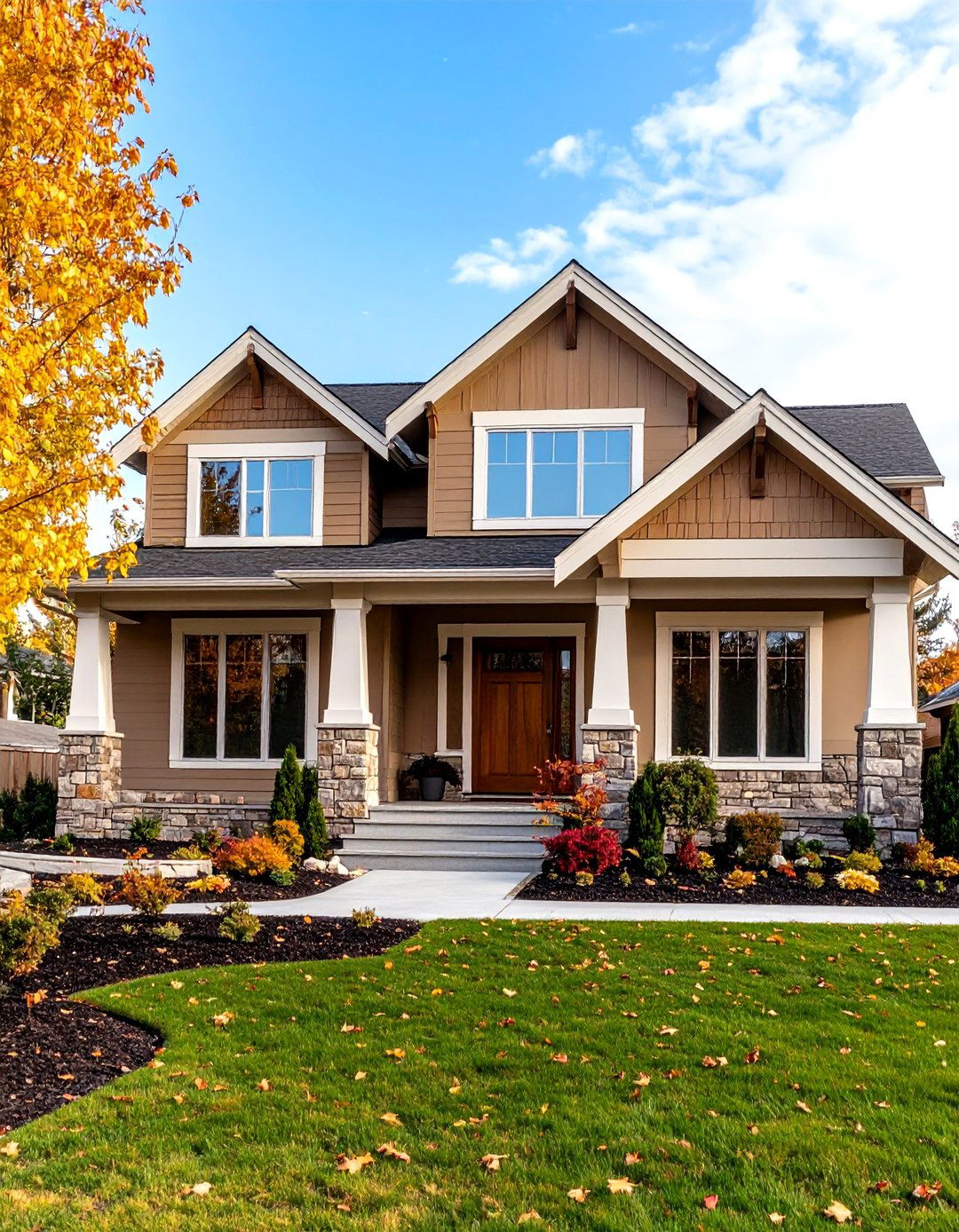
Desert Tan is a universally popular choice, blending seamlessly with its surroundings and enhancing your home's exterior. Among neutral house siding colors, desert tan offers exceptional versatility and broad regional appeal. This warm, earthy shade works perfectly across different architectural styles and geographic locations, making it an excellent choice for homeowners seeking timeless elegance. Desert Tan fits perfectly with any architectural style and region of the country. The color provides sophisticated warmth without overwhelming boldness, creating inviting exteriors that feel both classic and contemporary. Desert tan house siding colors pair beautifully with deep blues or greens for shutters and trim, white accents for crisp contrast, or natural stone elements for cohesive earth-tone palettes. This reliable choice maintains excellent resale value while offering lasting visual appeal.
6. Coastal Blue House Siding Colors
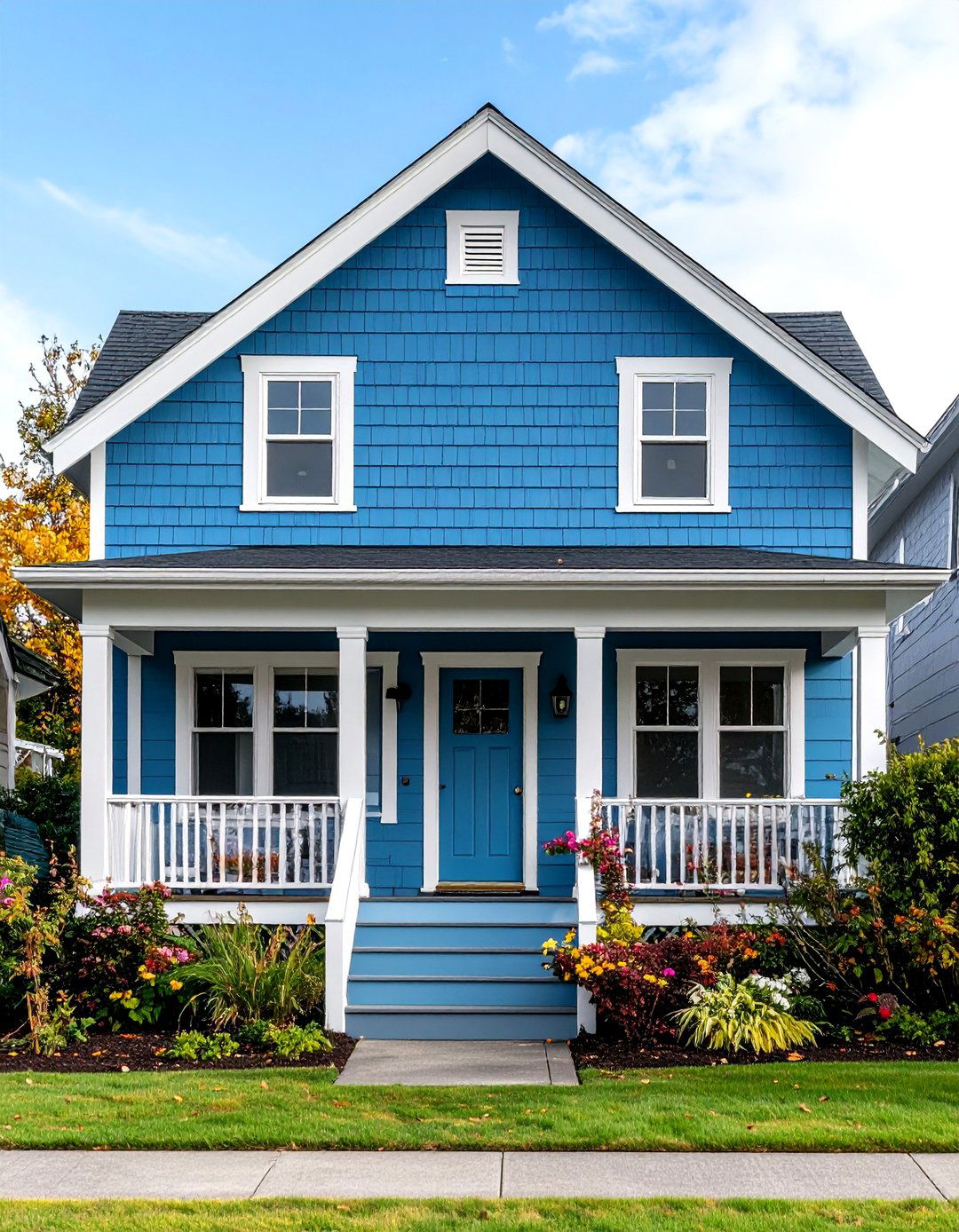
Coastal Blue manages to walk the line between comforting and bold, offering a pop of color yet isn't overwhelming — evoking feelings of calm and serenity. These house siding colors bring refreshing oceanic vibes to any home, regardless of geographic location. Coastal Blue provides a soothing, serene look with white trim, perfect for evoking coastal feelings. The grayish-blue hue creates peaceful exteriors that feel both sophisticated and approachable. Coastal blue works exceptionally well on Cape Cod, colonial, and cottage-style homes while also complementing modern farmhouse designs. This siding is exceptionally popular for homes in coastal states but works well in most regions. When paired with bright white trim, coastal blue house siding colors create perfect beach-inspired aesthetics that remain elegant and timeless throughout changing design trends.
7. Sage Green House Siding Colors
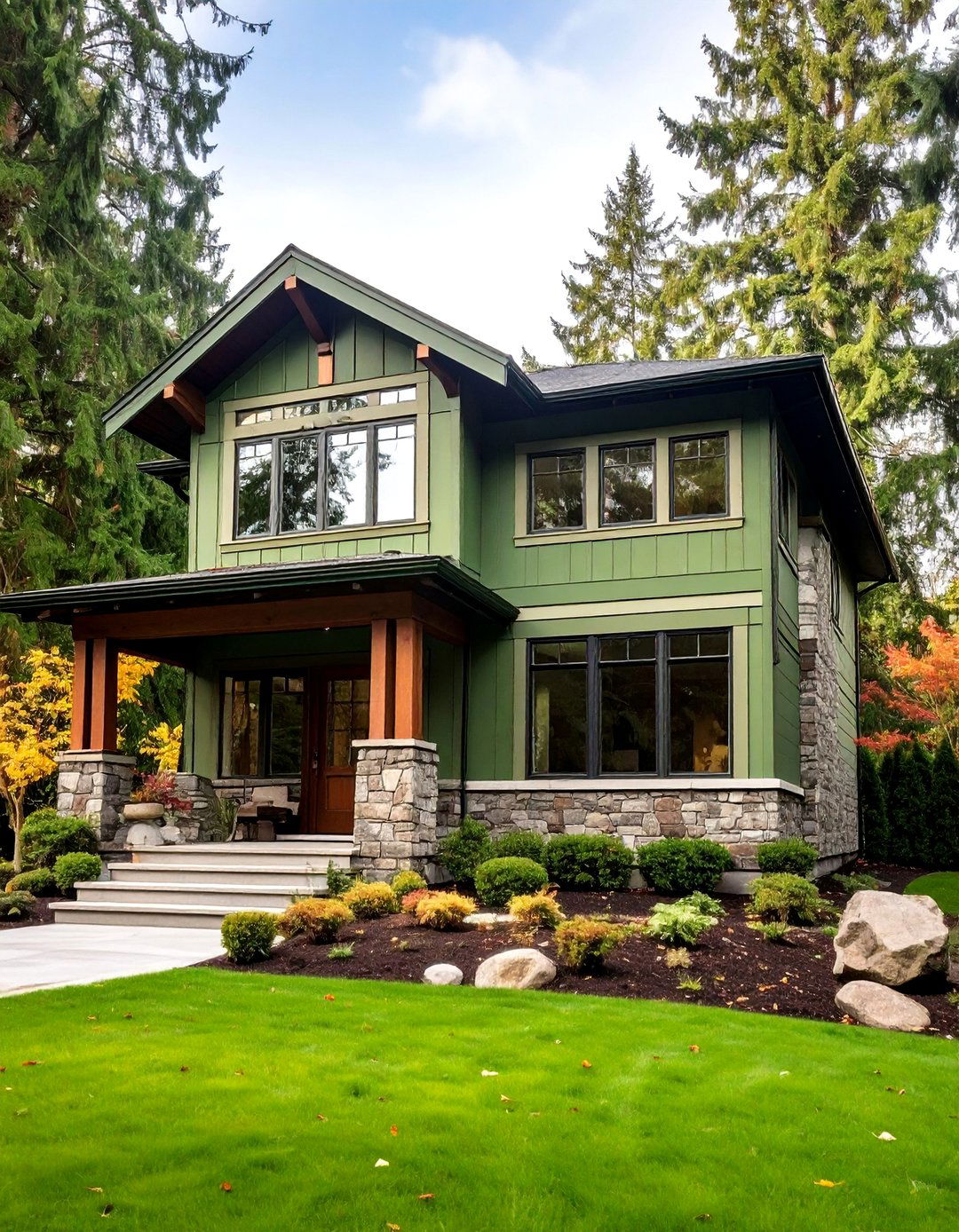
Sage green is surging in popularity this year, pairing beautifully with cream trim and stone accents, especially in wooded settings. Among nature-inspired house siding colors, sage green offers subtle organic appeal that connects homes with their natural environments. Sage green offers a subtle organic tone that pairs beautifully with natural stone accents and wooden features. This muted green creates sophisticated exteriors that feel both contemporary and timeless. Sage green house siding colors work particularly well on craftsman, farmhouse, and transitional architectural styles. The color's versatility allows for various accent combinations, from crisp white trim for clean contrast to warm wood tones for rustic charm. Olive and Sage Green are perfect for blending with the natural landscape while still making a statement. This trending choice delivers lasting appeal while maintaining connection to outdoor environments.
8. Black House Siding Colors
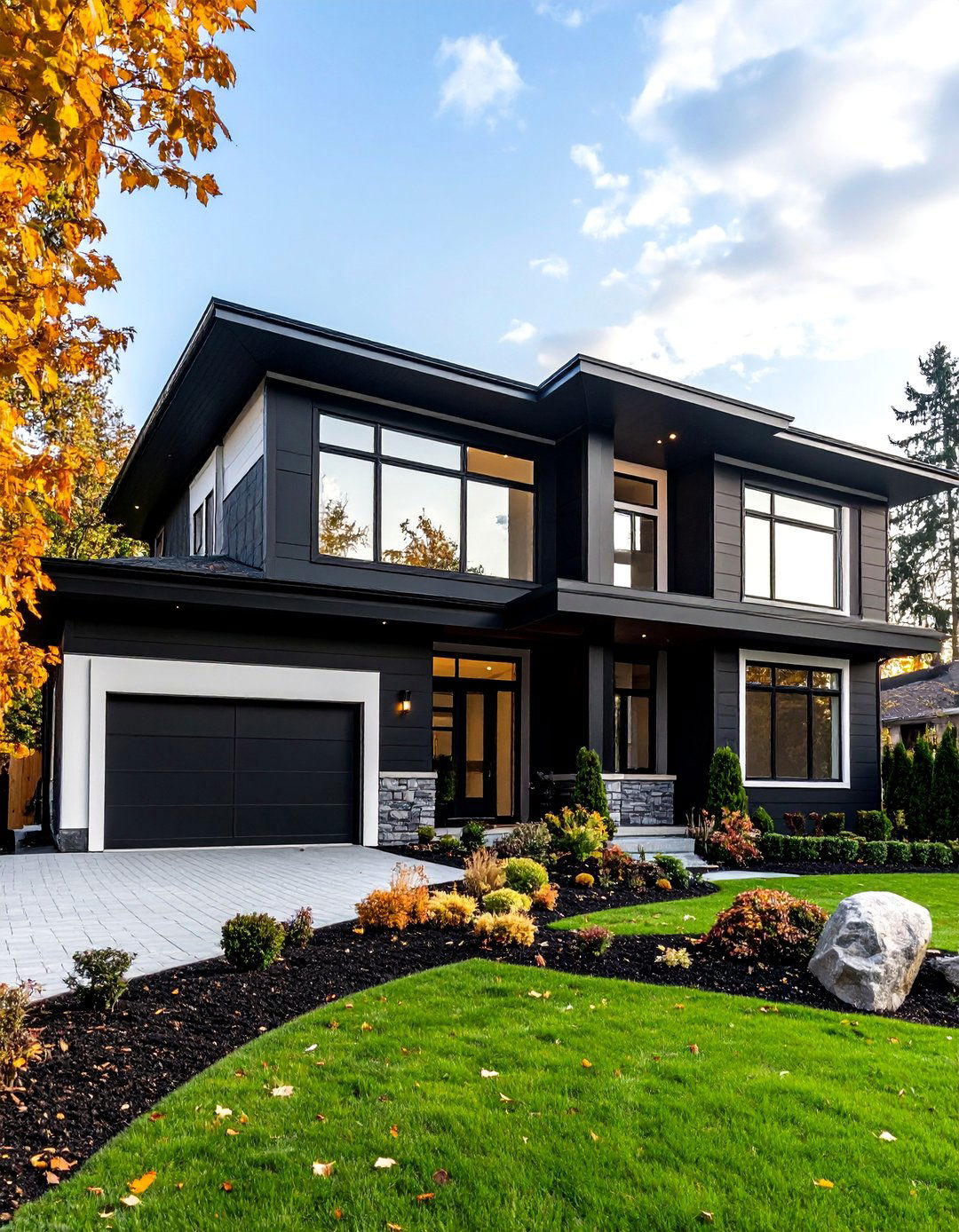
Black siding has become a major trendsetter for homeowners looking to make a bold and dramatic statement. Among contemporary house siding colors, black creates unparalleled sophistication and modern elegance. Black vinyl siding looks clean and modern on houses, hiding dirt and stains really well. This striking choice works exceptionally well on modern, minimalist, and contemporary architectural designs where simplicity and contrast are key design elements. An all-black home creates an impressive silhouette, trendy among contemporary homes. Black house siding colors pair beautifully with white trim for maximum contrast or with warm wood accents for softer sophistication. The dramatic color creates stunning backdrops for colorful landscaping while maintaining year-round elegance. This bold choice significantly enhances curb appeal and creates memorable architectural statements.
9. Autumn Red House Siding Colors
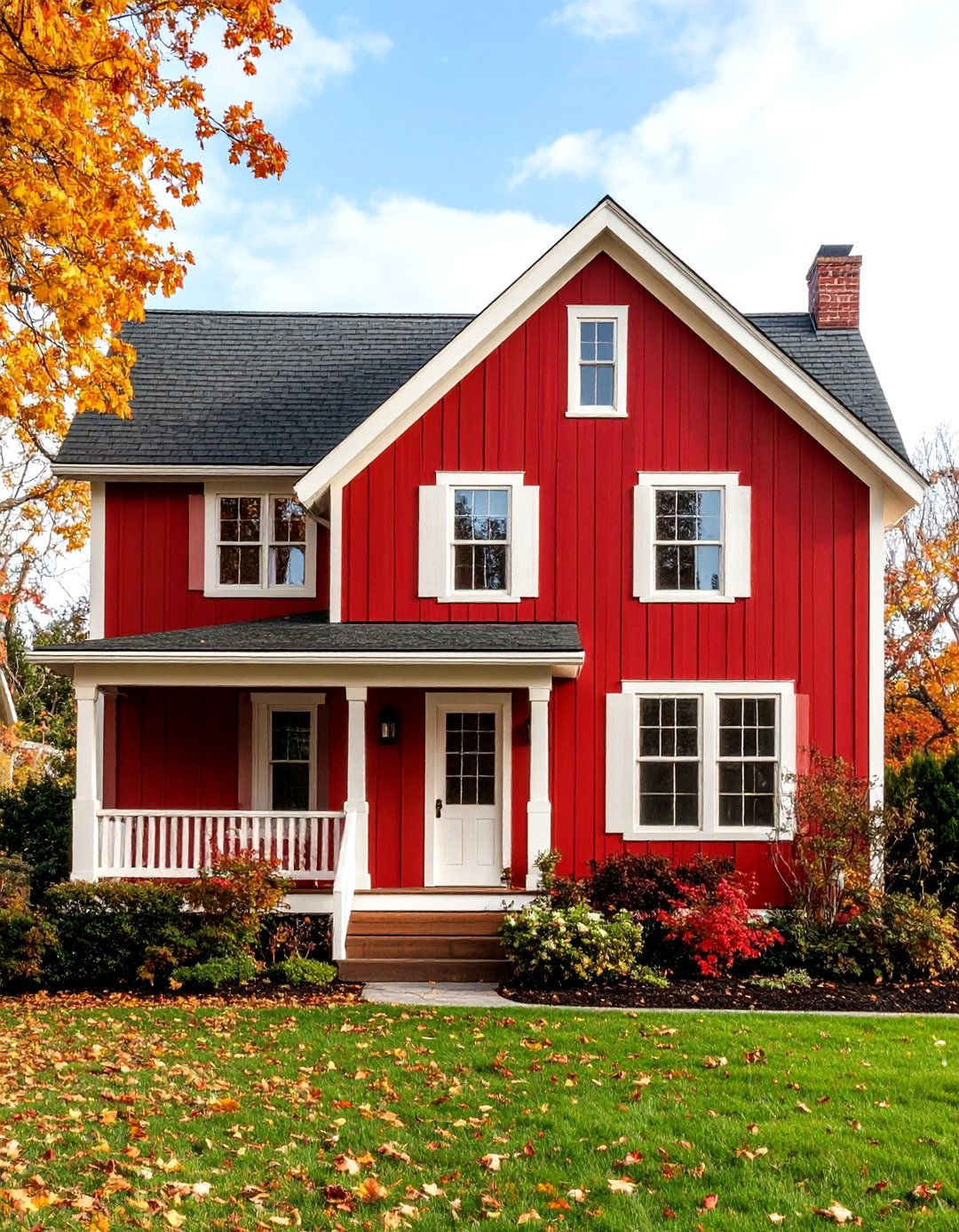
Autumn Red offers a feeling of nostalgia with a classic and rich red color reminiscent of an old, traditional barn. These house siding colors deliver bold character while maintaining cozy, welcoming appeal. This shade of siding offers a bold but cozy look for your house, working particularly well for farmhouse-style homes. Autumn red creates stunning focal points that complement both rural and suburban settings. Reds that are reminiscent of the old, rusty barn red produced through linseed oil are nearly universally popular. The key lies in choosing red tones closer to rust or brown rather than bright fire engine shades. Autumn red house siding colors pair best with warm neutral tones like cream, beige, and tan for balanced compositions. This heritage-inspired choice adds personality and character while maintaining sophisticated appeal across various architectural styles.
10. Pewter Gray House Siding Colors

Pewter is a very light gray that is cool enough in tone to work on smaller homes, making them appear larger. Among versatile house siding colors, pewter gray offers sophisticated neutrality with contemporary appeal. Pewter is highly sought-after, offering coolness that pairs beautifully with white trim for traditional looks or honey-stained wood for contemporary appearance. This refined shade provides perfect balance between light and dark, warm and cool tones. Pewter gray house siding colors work exceptionally well across various architectural styles while maintaining broad market appeal. James Hardie says pewter sometimes has a hint of purple and works excellent with both cool and warm tones. The color's versatility allows for diverse accent combinations, from classic black and white schemes to warm beige and light brown palettes, making it excellent choice for homeowners seeking timeless sophistication.
11. Warm Beige House Siding Colors
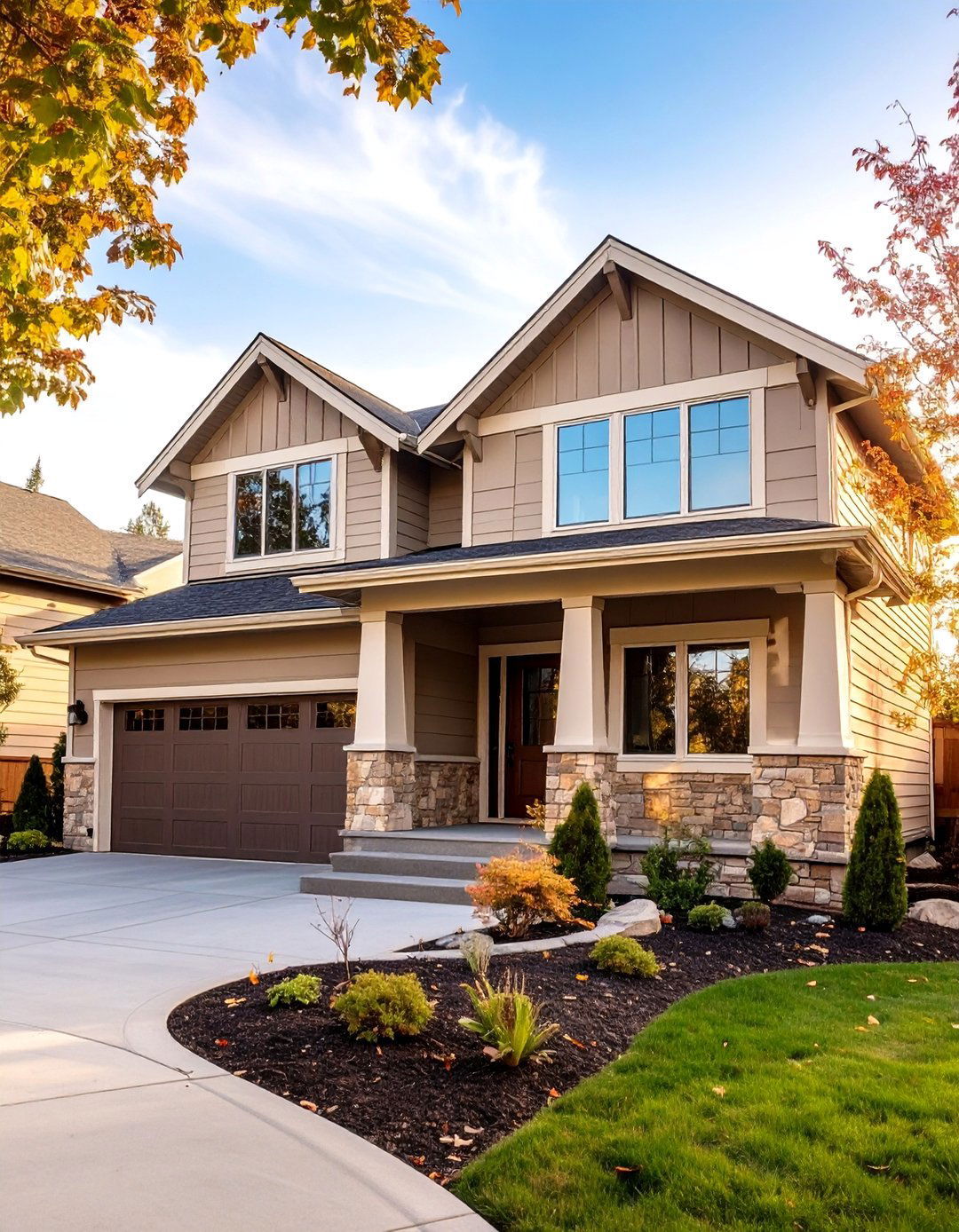
Warm beige blends well with stone accents and most landscapes, making your home look welcoming and well-maintained with this natural shade. Among classic house siding colors, warm beige offers enduring appeal and exceptional versatility. Warm Beige works well with various siding styles, such as board and batten, shake siding, and horizontal lap vinyl siding. This sophisticated neutral creates inviting exteriors that feel both elegant and approachable. Warm beige house siding colors complement virtually any architectural style while providing excellent backdrop for colorful accents and natural landscaping. Cream is a light and warm shade of beige with soft and inviting look, pairing well with other neutral colors. The color's timeless quality ensures lasting appeal while maintaining excellent resale value. This reliable choice works particularly well in suburban neighborhoods where sophisticated neutrality is desired.
12. Light Maple House Siding Colors
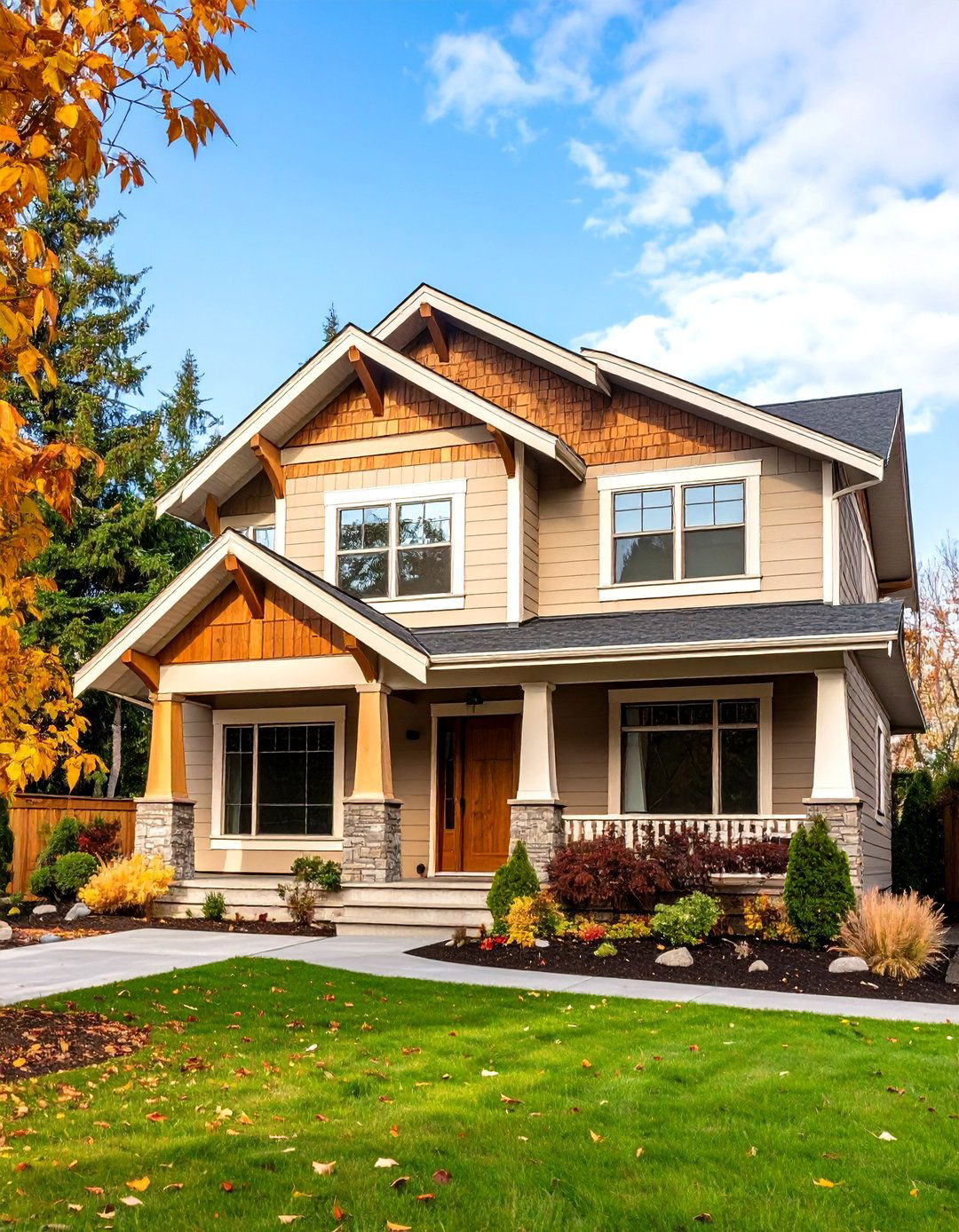
Light Maple is a rich tone similar to the clear color of heartwood found in a maple tree, making a beautiful backdrop for homes with more powerful accents. These house siding colors offer natural warmth with sophisticated appeal. Light Maple is a trendy pick in New England and other northern areas, mimicking the color of heartwood from a maple tree. This organic shade creates connections with natural surroundings while maintaining refined elegance. Light maple house siding colors pair beautifully with multiple color palettes, including both neutrals and bolder accent choices. Light maple reflects sunlight, helping to keep the house cooler in hot weather and reducing energy costs. The color works exceptionally well with crisp white trim, rich green shutters, or rusty reddish-brown brickwork, offering versatile design possibilities for various architectural styles and personal preferences.
13. Olive Green House Siding Colors
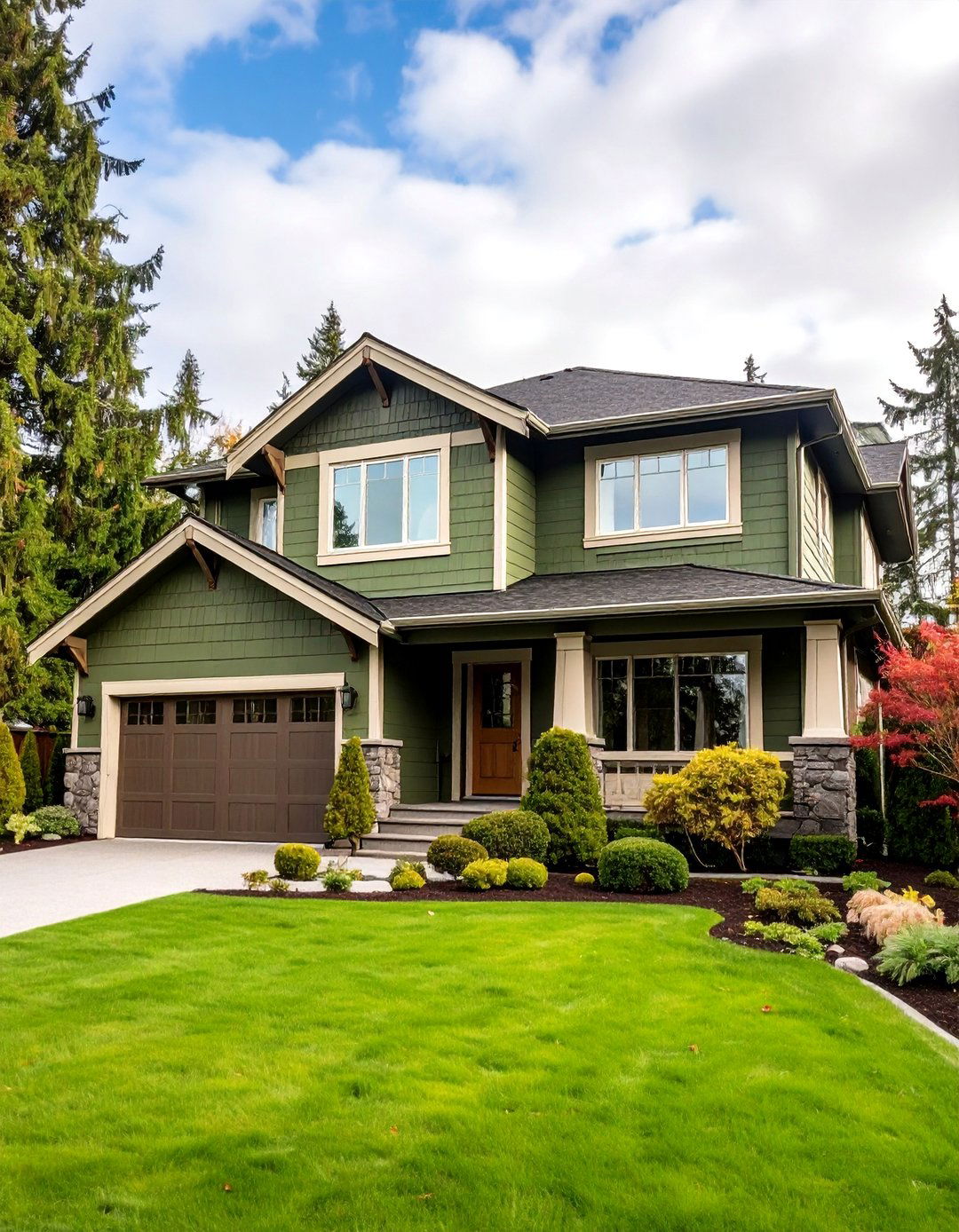
Olive is close enough to gray to have universal appeal, found on homes in the south as well as the west coast. Among earthy house siding colors, olive green offers sophisticated richness with broad regional appeal. Olive siding offers a rich, grayish-green pigment with gray tones that give this siding universal appeal. This distinctive shade works beautifully across different architectural styles while maintaining connection to natural environments. Olive Green is a graceful and elegant yellowish-green, increasingly popular across various regions. Olive green house siding colors pair excellently with white, cream, and pale gray accents, while also working well with bursts of deeper colors like red. Olive green offers a fresh, modern look while still fitting into natural surroundings. This trending choice delivers sophisticated appeal while maintaining versatility across various design preferences and architectural contexts.
14. Cypress Green House Siding Colors

Cypress offers a soft, muted greenish tone that creates an almost neutral appearance, blending well with other earthy tones. These house siding colors provide subtle natural appeal with exceptional versatility. Cypress is a muted green color popular in the northern US, harmonizing beautifully with natural surroundings. This sophisticated shade creates seamless transitions between homes and their natural environments, particularly appealing in wooded or rural settings. Cypress is particularly popular among homeowners in the northern United States, complementing surrounding natural colors from trees, fields, and woodlands. Cypress green house siding colors work best with lighter neutral trim colors, though white accents create striking contrast. Cypress contrasts with bold colors such as blue and gray shades, adding nature touches while allowing bold accents to create dramatic yet inviting visual effects. This muted choice offers lasting sophistication.
15. Marigold Yellow House Siding Colors
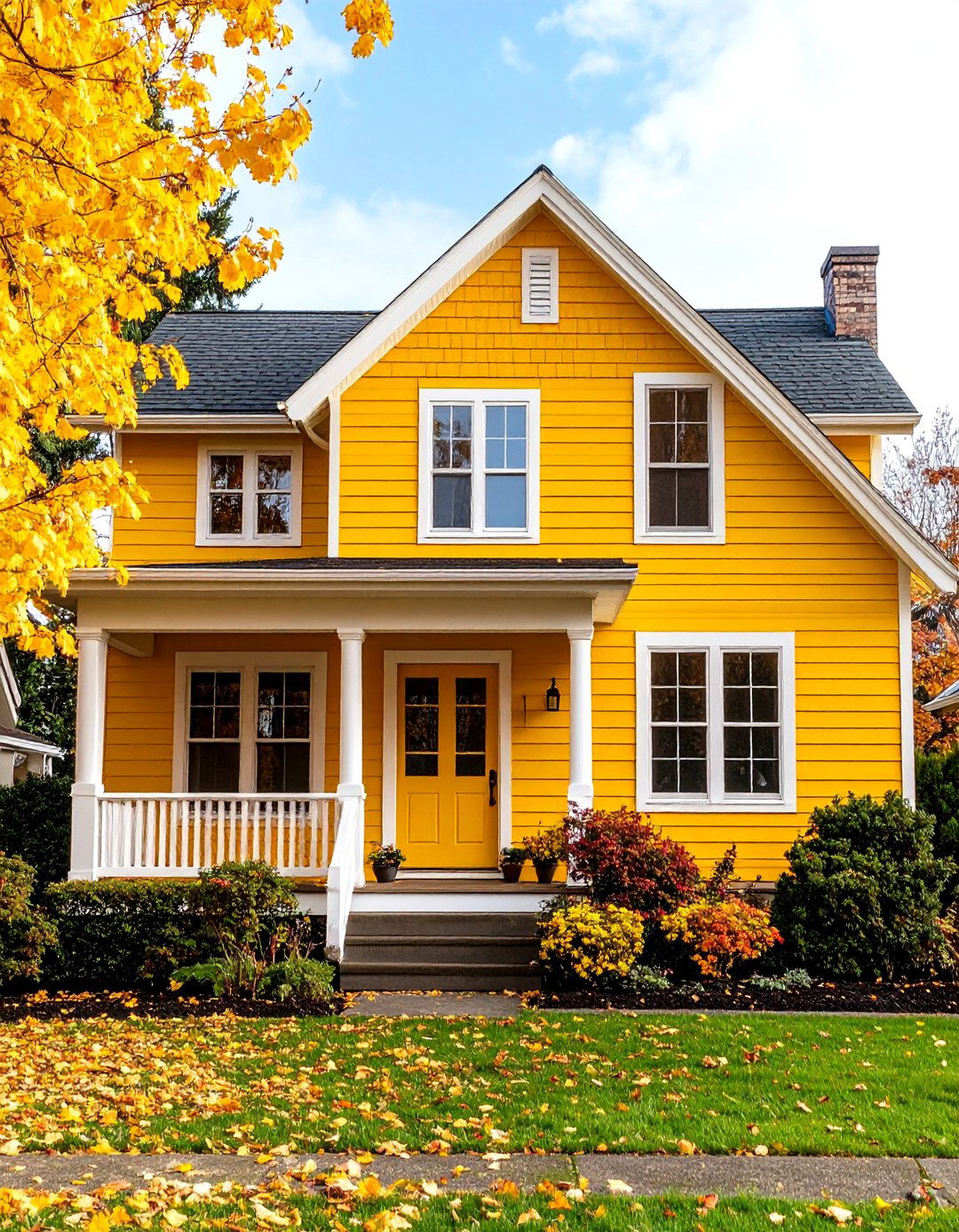
Marigold is a warm, light yellow that brightens your home's exterior, especially when paired with white trim. Among cheerful house siding colors, marigold offers sunny warmth without overwhelming boldness. Marigold offers a soft, creamy yellow that offers warmth to the home without going over the top. This inviting shade creates welcoming exteriors that feel both sophisticated and approachable. Marigold can be found on a variety of different architectural styles and in all areas. Marigold yellow house siding colors work particularly well when paired with crisp white trim for clean contrast or with warm neutral accents for cohesive palettes. As a light color, it adds a sunny, inviting feel and shows less wear over time. This optimistic choice brings consistent brightness to homes while maintaining elegant sophistication that works across various architectural styles and regional preferences.
16. Sable Brown House Siding Colors

Sable Brown offers warm, rich palette and comforting essence, an earth tone that works beautifully in every region. Among rich house siding colors, sable brown provides sophisticated warmth with universal appeal. Sable Brown fits perfectly with color schemes giving you a rich, warm, dark color that can be backdrop to various different palettes. This deep shade creates stunning foundations for diverse accent combinations. Sable Brown siding is particularly popular in the southern United States, though it's not uncommon to see this siding scattered throughout the country. Sable brown house siding colors work beautifully with rusty red accents for dynamic appearances or stark white trim for crisp contrast. Brown siding alongside bright white trim makes this earthy Sable Brown siding pop, evoking natural, down-to-earth vibes. This reliable choice offers lasting sophistication while maintaining connection to natural elements.
17. Light Gray House Siding Colors

Light Gray is a sophisticated and modern alternative to white that still maintains a fresh and bright appearance. Among contemporary house siding colors, light gray offers refined neutrality with modern appeal. Light gray is a soft and subtle shade with clean and contemporary look, pairing well with neutral colors such as white or black. This versatile choice complements various architectural styles while maintaining broad market appeal. Pearl Gray is popular for its understated softness, while Light Mist brings a touch of blue, like a brightening sky. Light gray house siding colors create perfect backdrops for both bold accent colors and subtle neutral palettes. Gray siding provides a sense of calm while remaining trendy and modern, coming from either end of the palette spectrum while remaining neutral. This sophisticated choice delivers lasting elegance while offering exceptional versatility for various design preferences.
18. Cream House Siding Colors
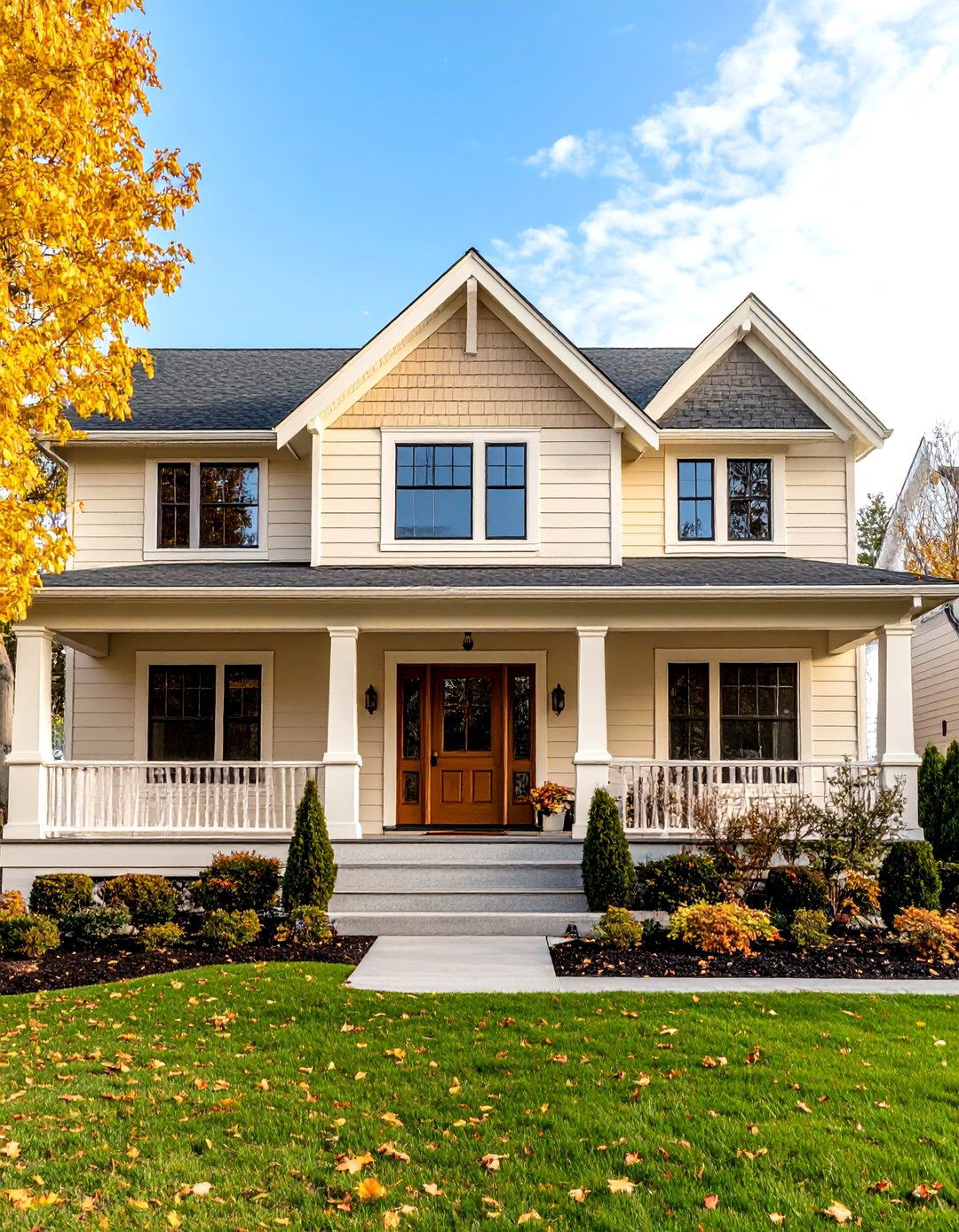
Natural Clay is an off white cooler than cream or tan, but still warm enough to have personality. Among classic house siding colors, cream offers timeless warmth with sophisticated appeal. Natural Clay is a cooler off-white alternative to cream, pairing well with tan, beige, and brown for cohesive looks. This elegant shade creates refined exteriors that feel both traditional and contemporary. Cream colors are more subdued but still give that light and airy feeling to exteriors while adding hints of color. Cream house siding colors work exceptionally well with various architectural styles, from colonial to craftsman designs. Cream has a soft and inviting look, pairing well with other neutral colors such as white or gray. The color's versatility allows for diverse accent combinations while maintaining sophisticated elegance. This reliable choice offers excellent resale value while creating welcoming, approachable exteriors that stand the test of time.
19. Pacific Blue House Siding Colors
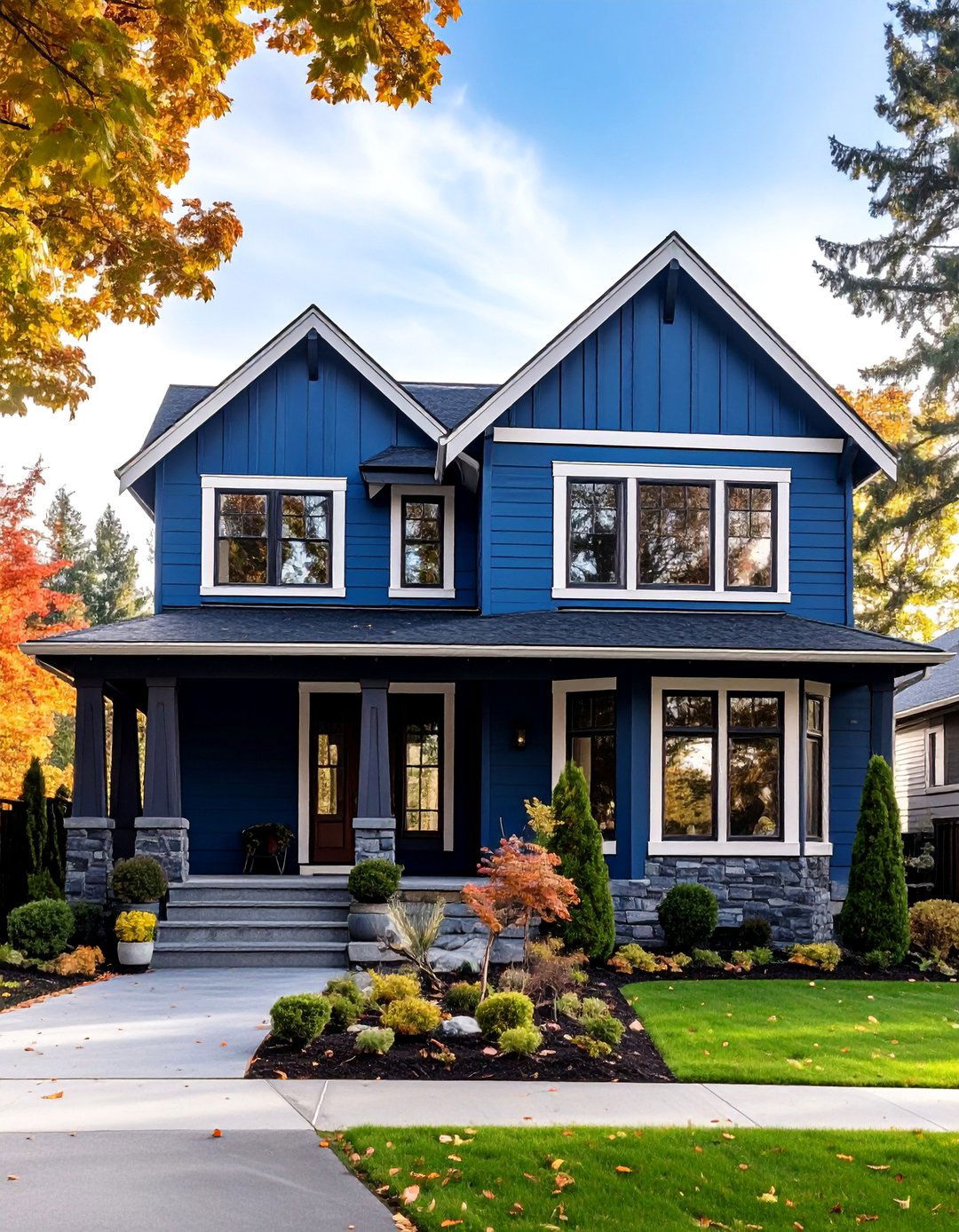
Pacific Blue is more subdued in tone than Coastal Blue, but still maintains the nearly universal popularity that all blue shades share. Among distinctive house siding colors, Pacific blue offers sophisticated depth with calming appeal. Pacific Blue is a deeper, somber blue with universal appeal, suitable for homes in various regions. This rich shade creates striking exteriors that feel both bold and serene. Pacific Blue is a color we haven't seen in a while, gaining popularity in 2025. Pacific blue house siding colors work beautifully with white trim for classic contrast or with cream and gray accents for sophisticated palettes. The color's depth provides excellent backdrop for colorful landscaping while maintaining year-round appeal. Vibrant hues like Pacific Blue are trending for homeowners looking to add personality and drama to their exteriors. This distinctive choice offers lasting sophistication while creating memorable architectural statements.
20. Taupe House Siding Colors
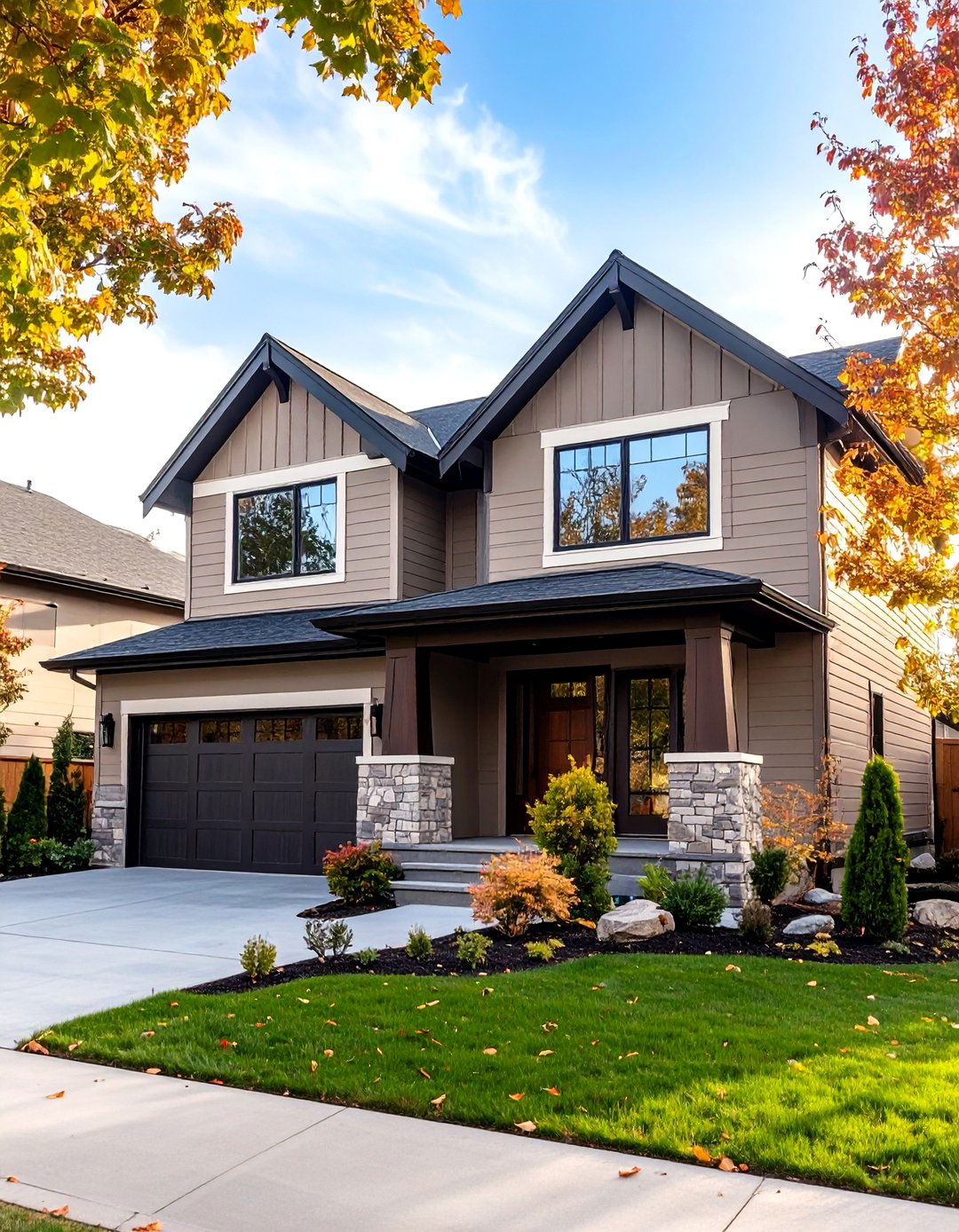
Taupe balances perfectly between gray and beige; light enough to be considered neutral, but cooler in tone than most neutral shades. Among sophisticated house siding colors, taupe offers refined versatility with contemporary appeal. Taupe is a versatile and muted shade of beige that gives a contemporary and understated look. This elegant choice creates timeless exteriors that work across various architectural styles. Beige or Taupe earth tones are easy to pair with other materials, creating calm and inviting atmospheres. Taupe house siding colors pair excellently with contrasting colors such as white or black for dramatic effect, or with other neutral shades for cohesive palettes. Newport Taupe is a deeper version that works very well with rich red and brown accents. This sophisticated choice delivers excellent resale value while maintaining broad appeal across different design preferences and regional markets.
Conclusion:
Selecting the perfect house siding color requires balancing personal preferences with practical considerations like architectural style, climate, and resale value. The most popular choices in 2025 range from timeless neutrals like white and gray to bold statement colors like navy blue and forest green. Whether choosing classic whites for broad appeal or distinctive colors like sage green for personality, the key lies in selecting shades that complement your home's architecture while reflecting your unique style and enhancing long-term curb appeal.


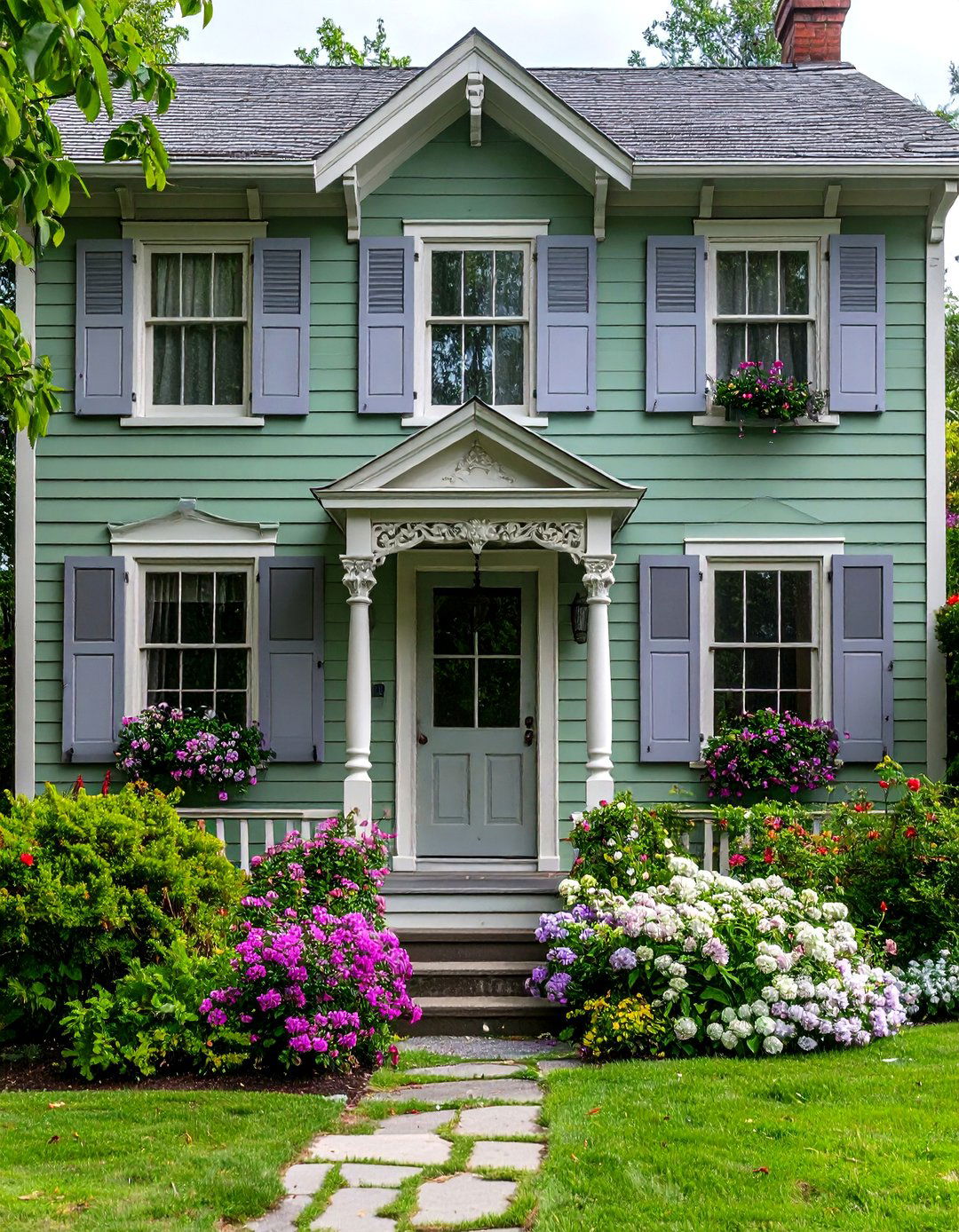
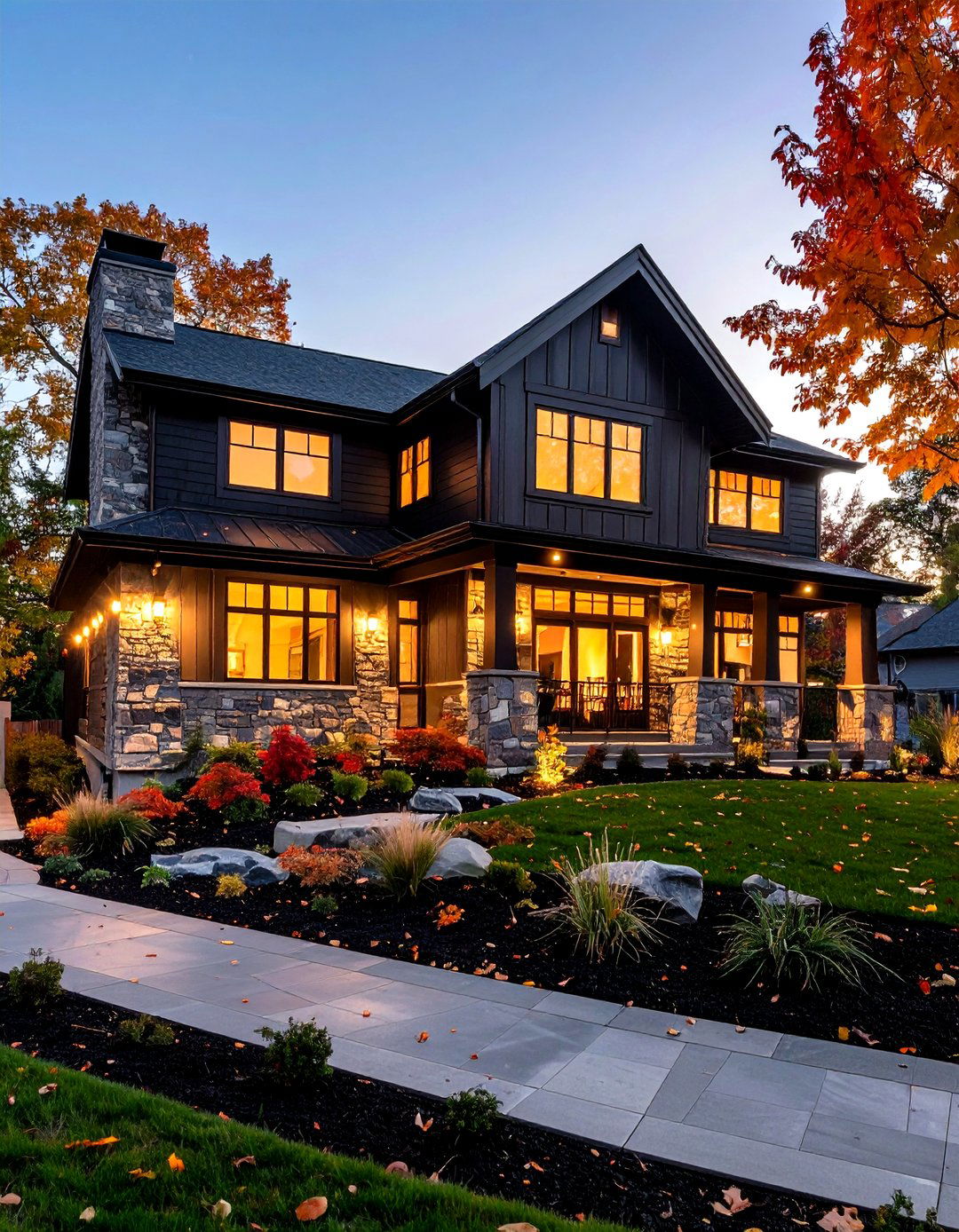
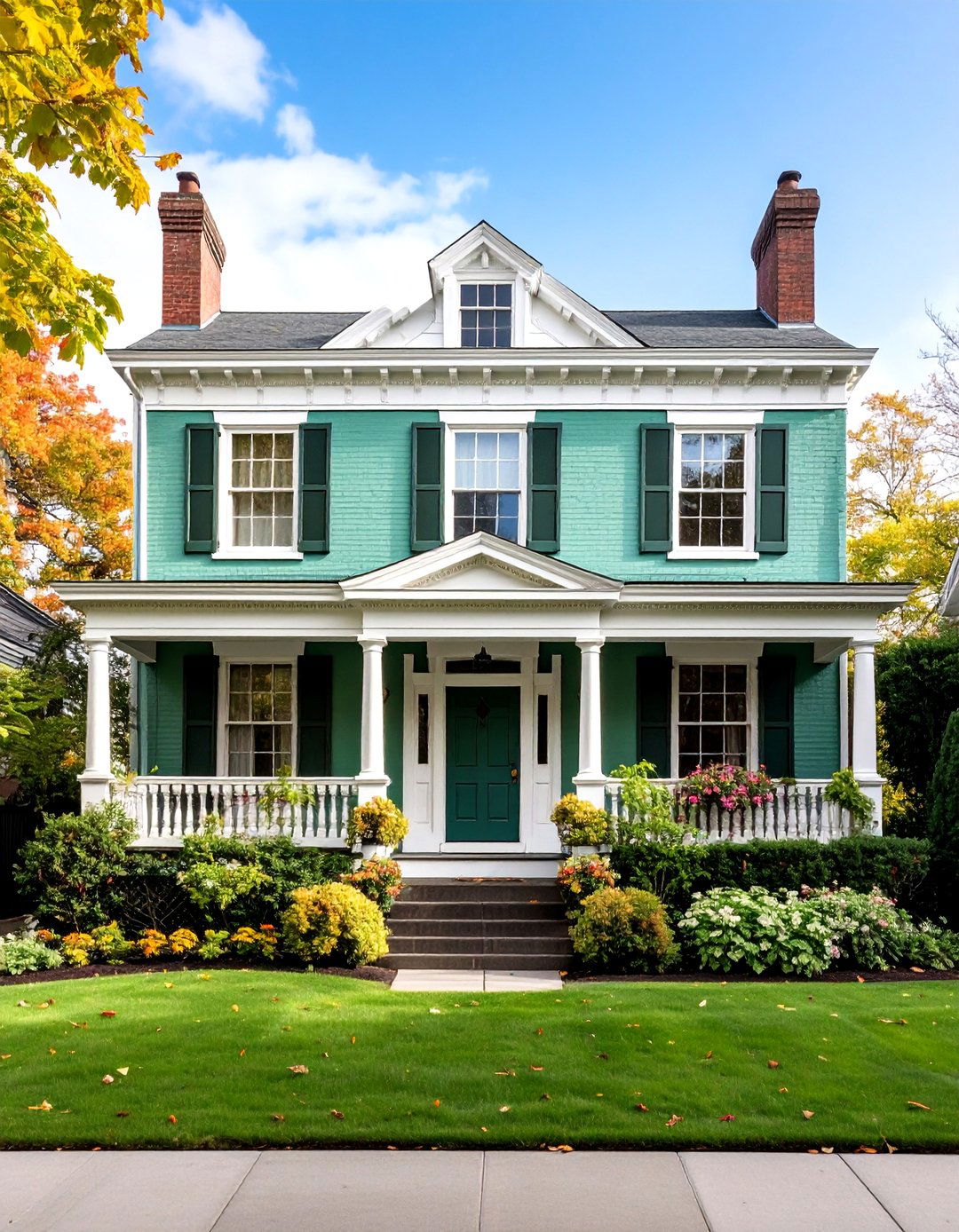
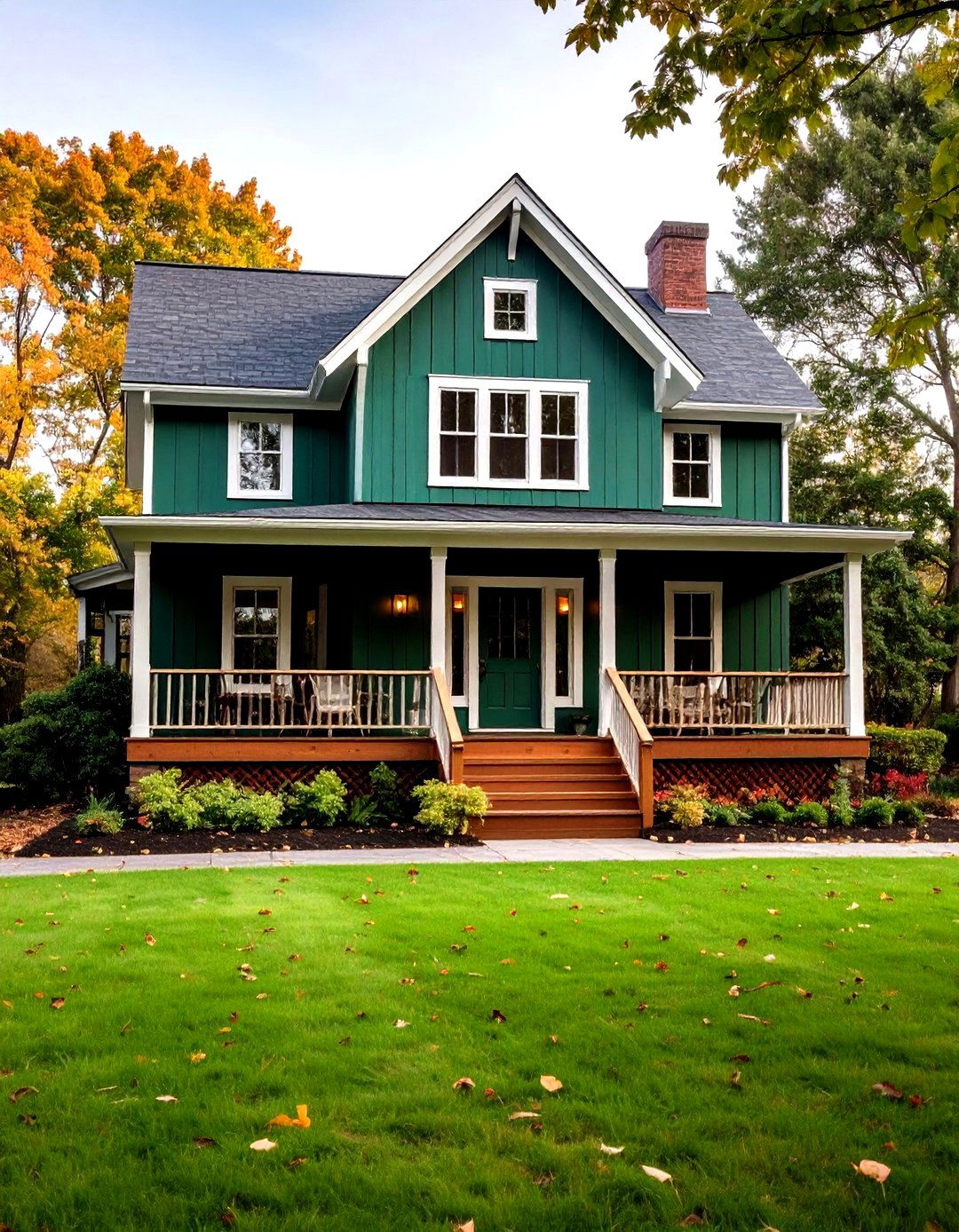
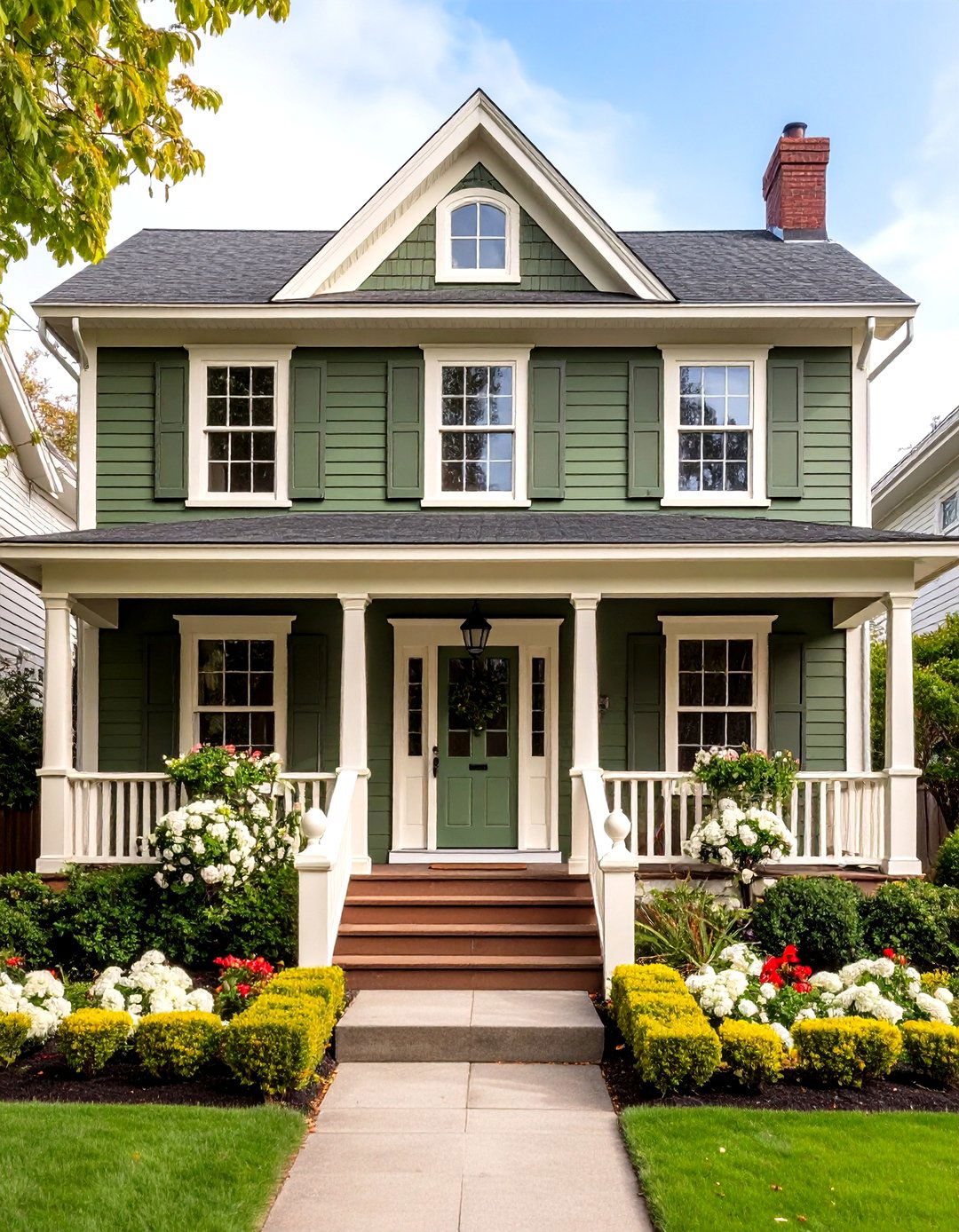

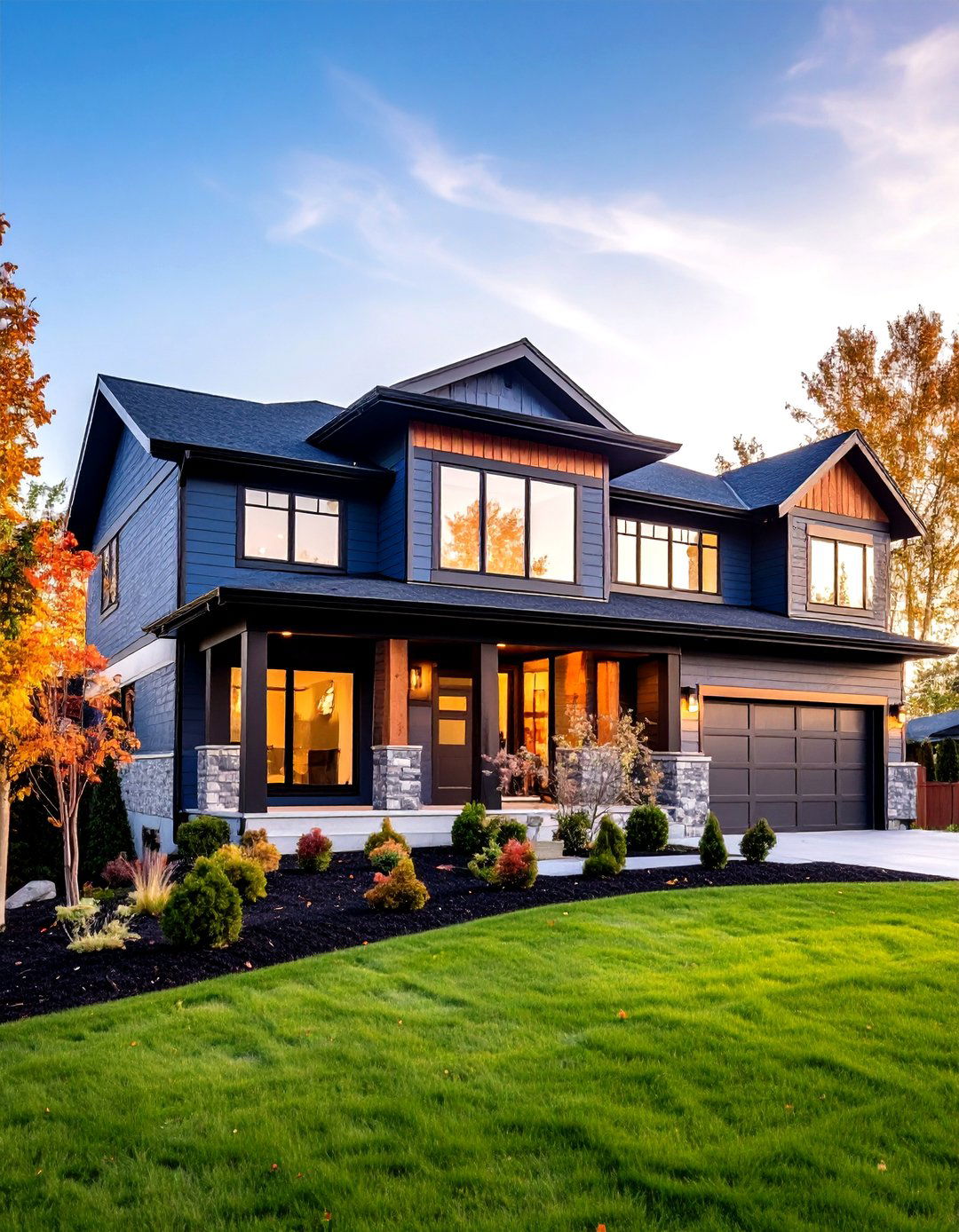
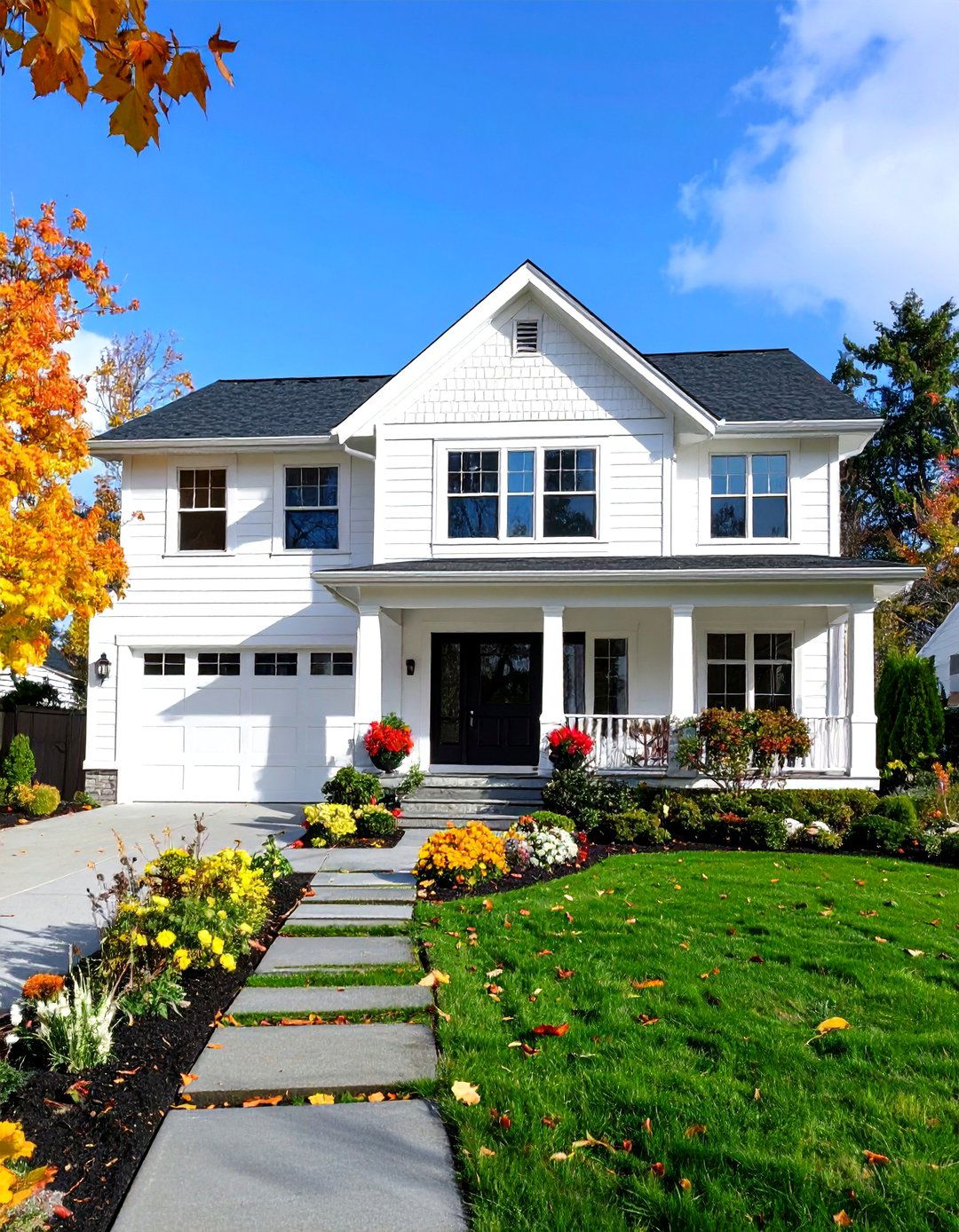
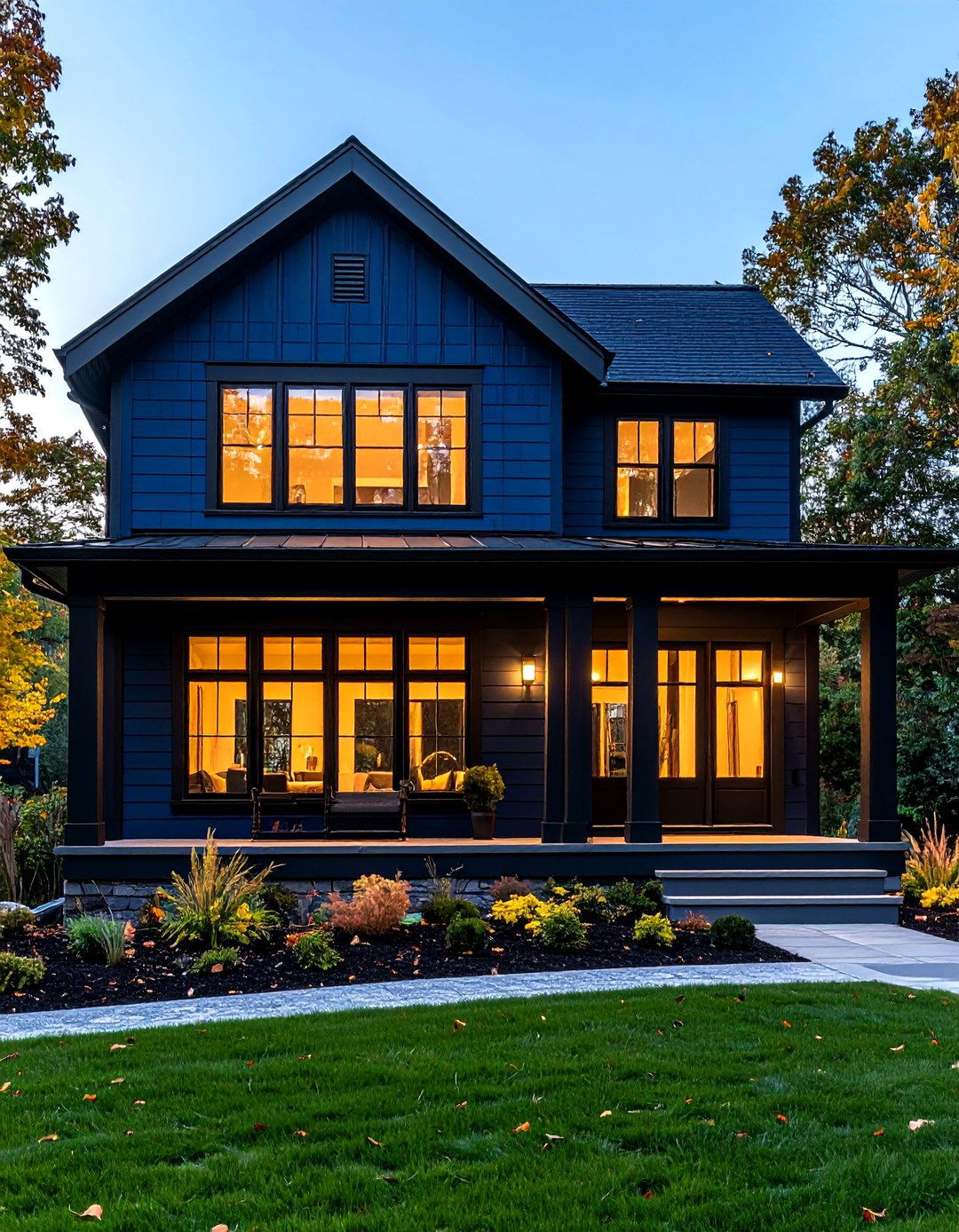
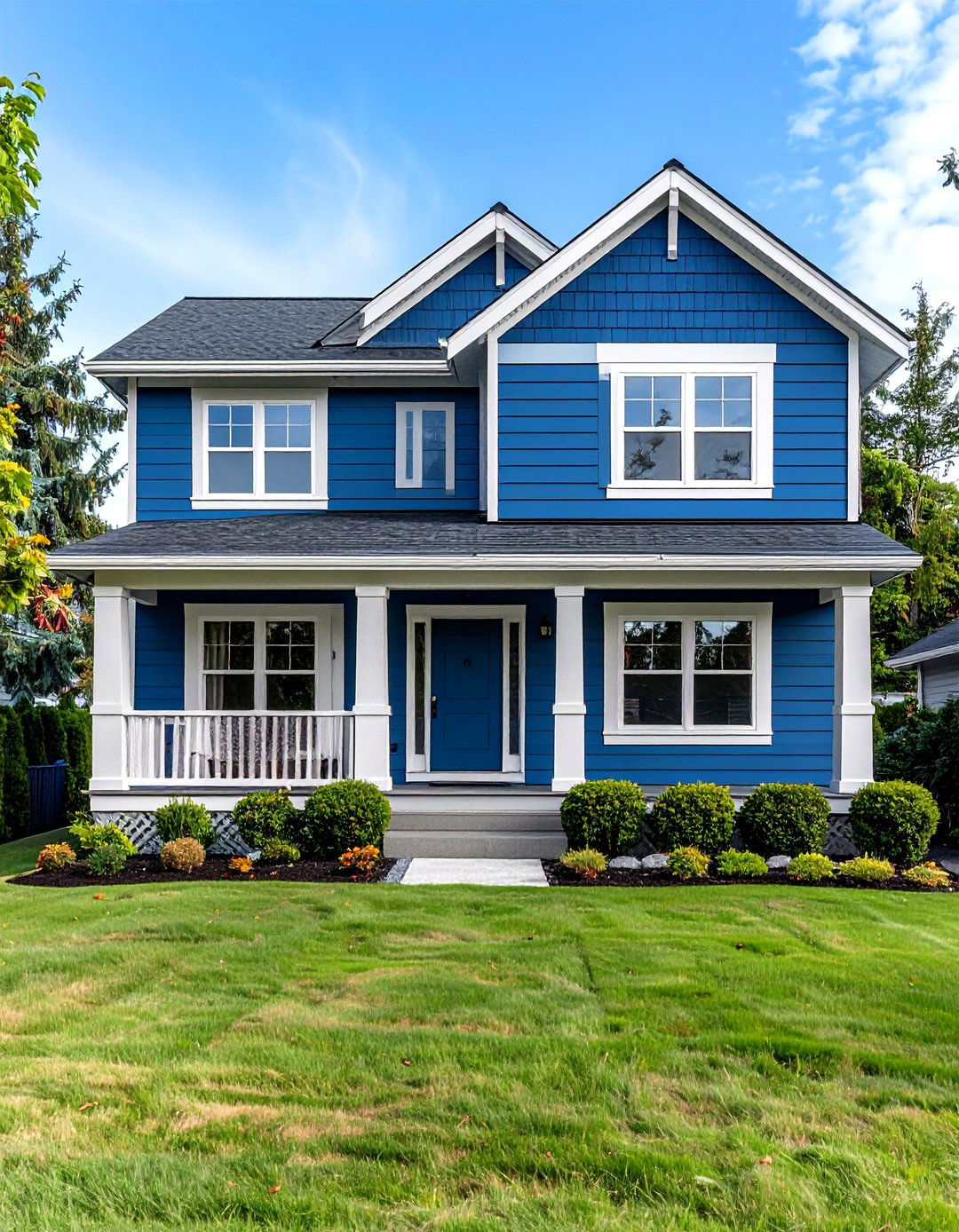
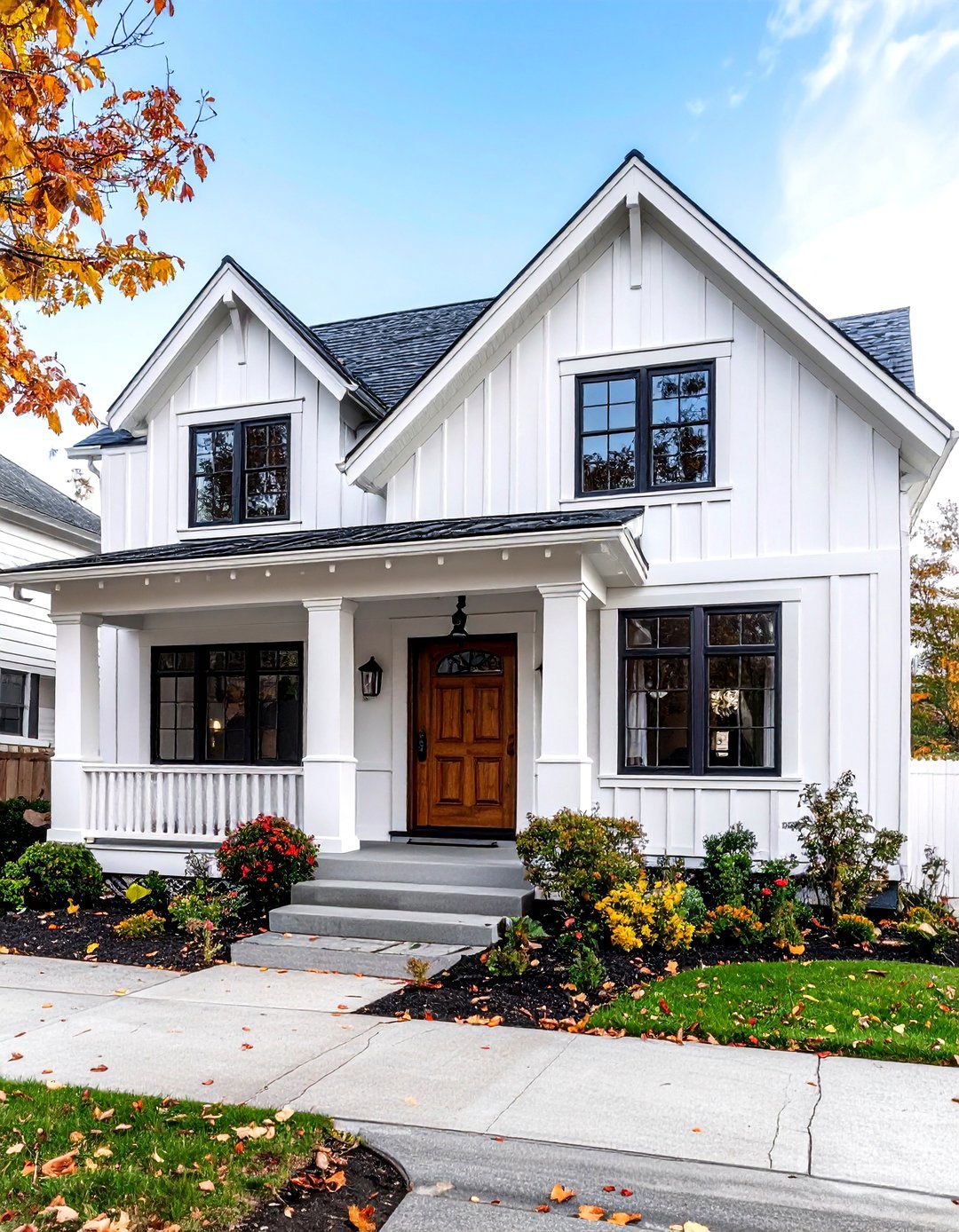

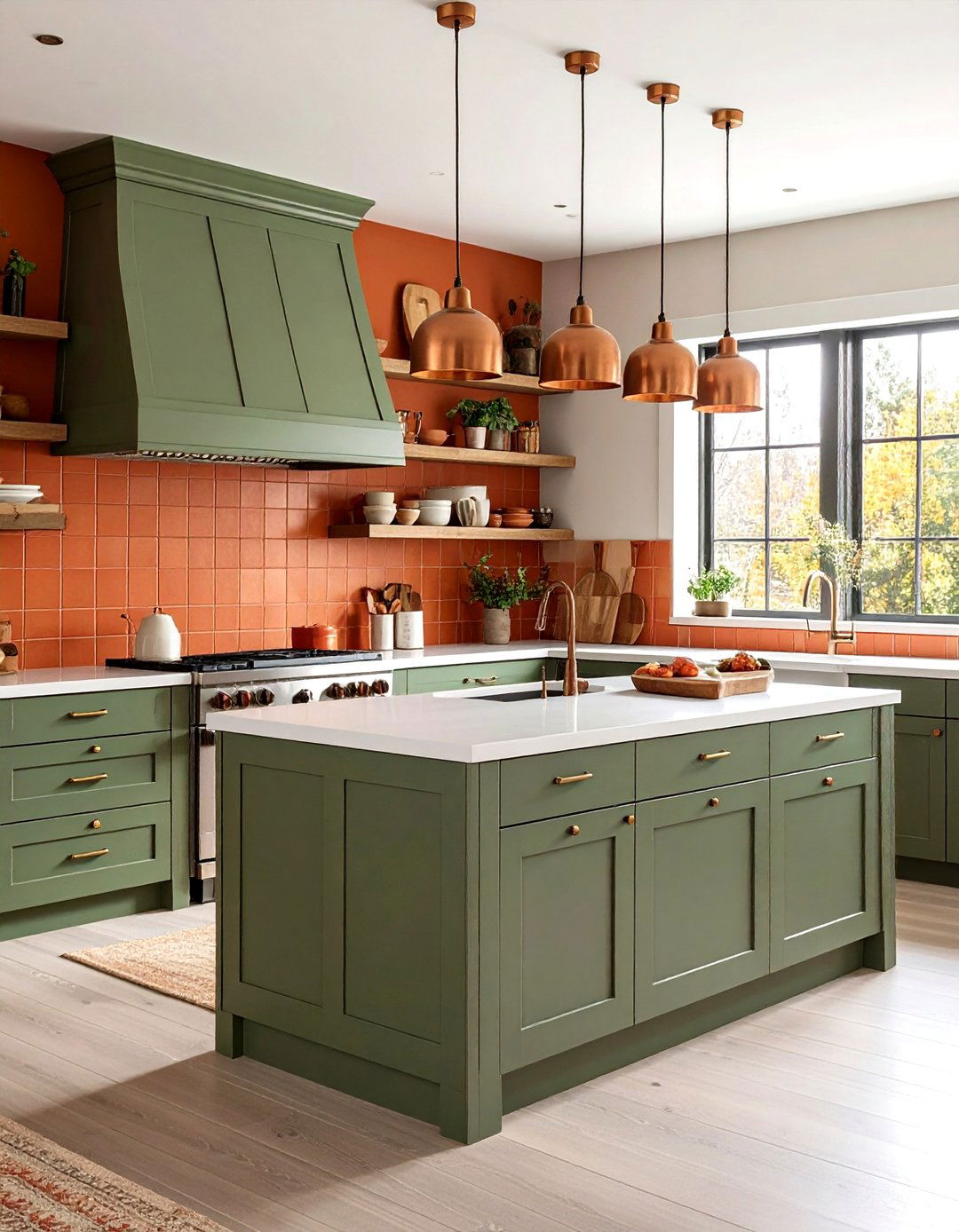
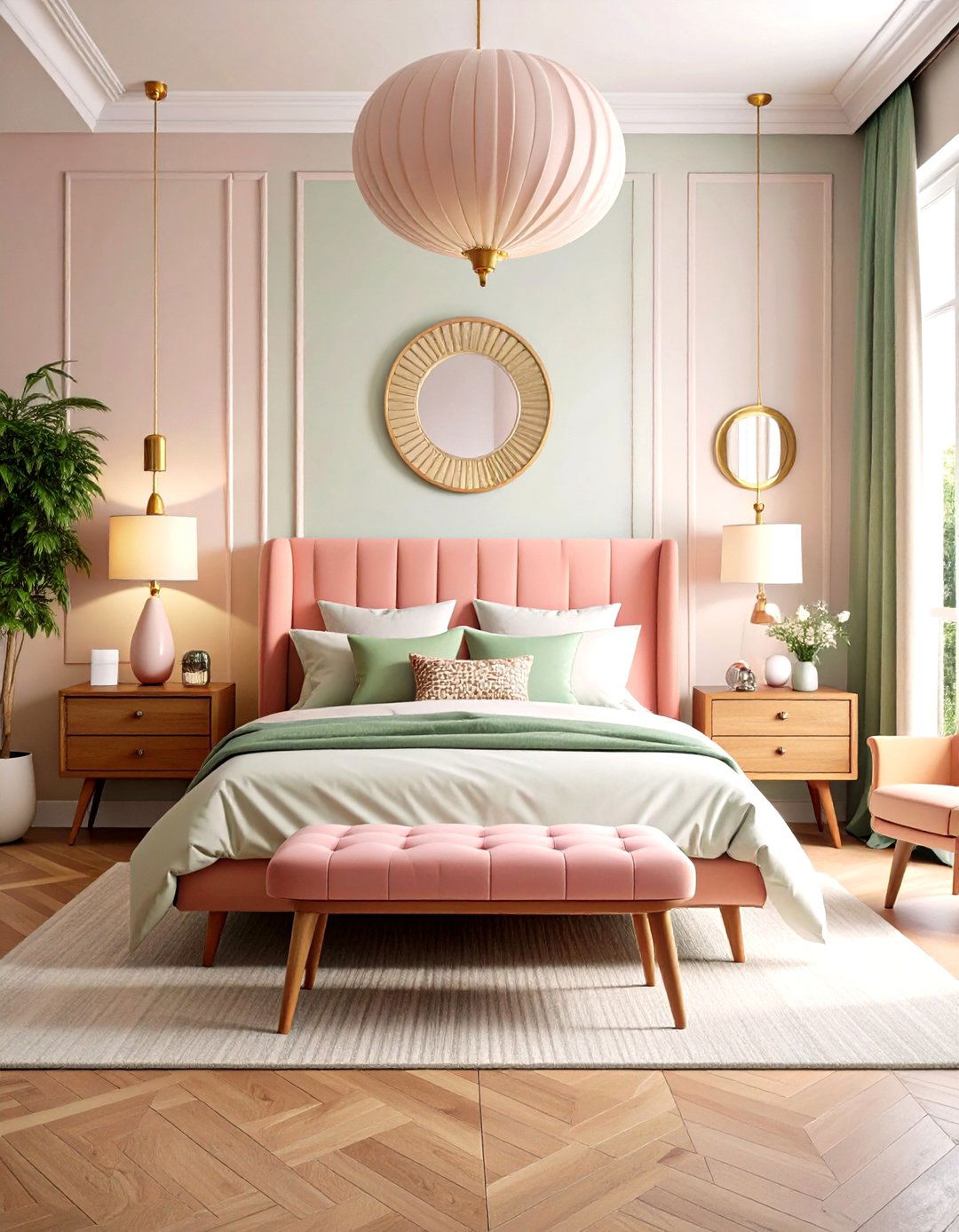
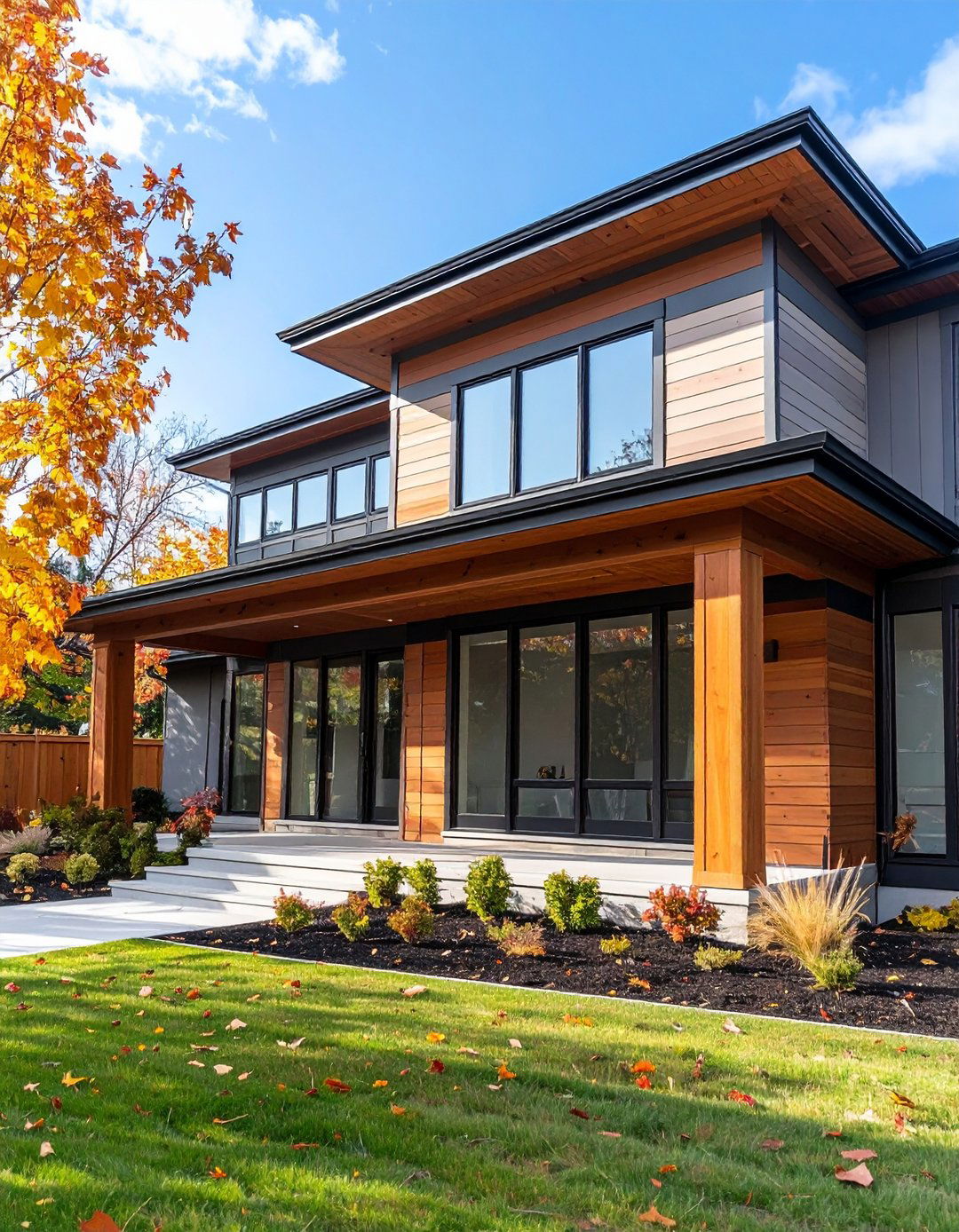
Leave a Reply